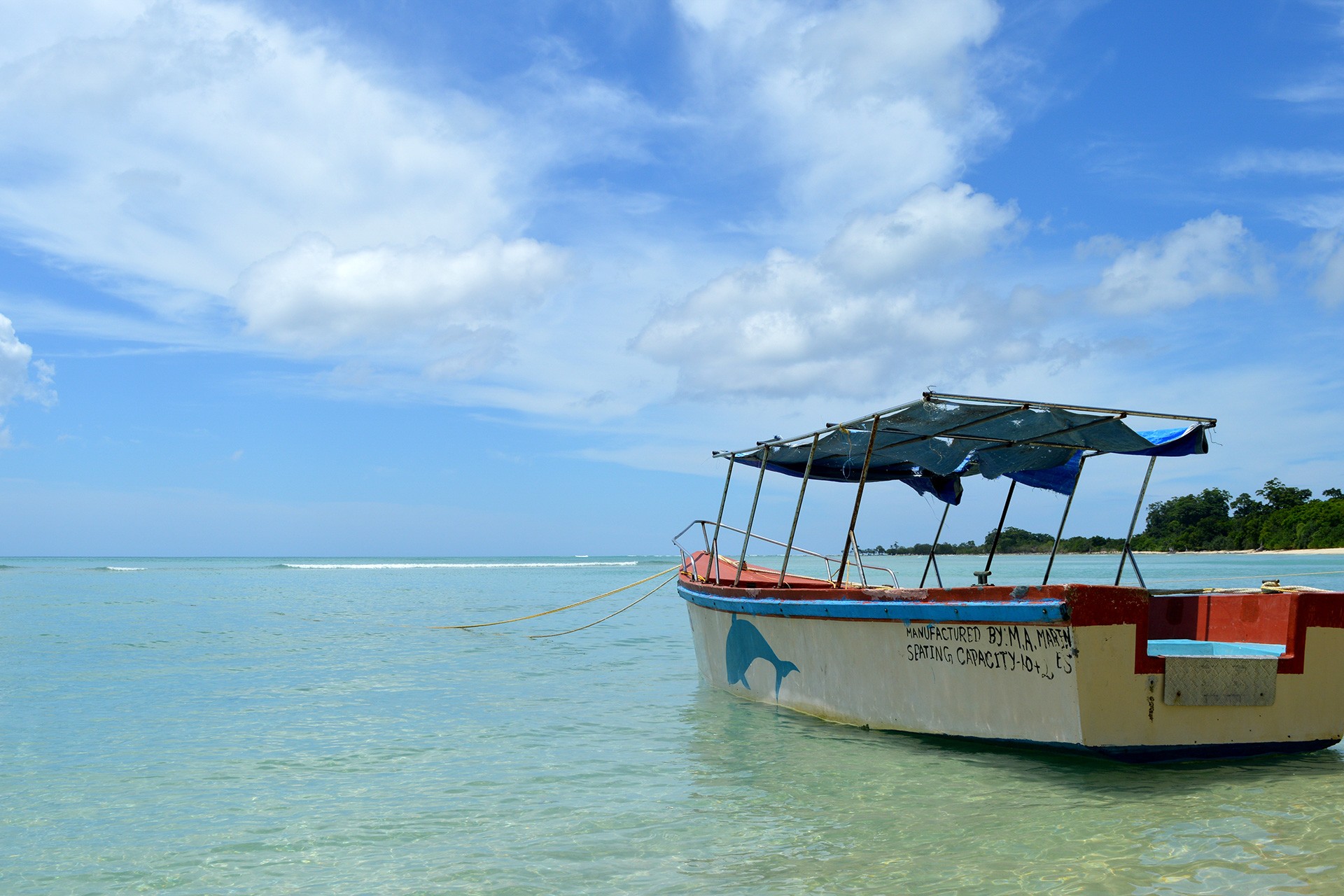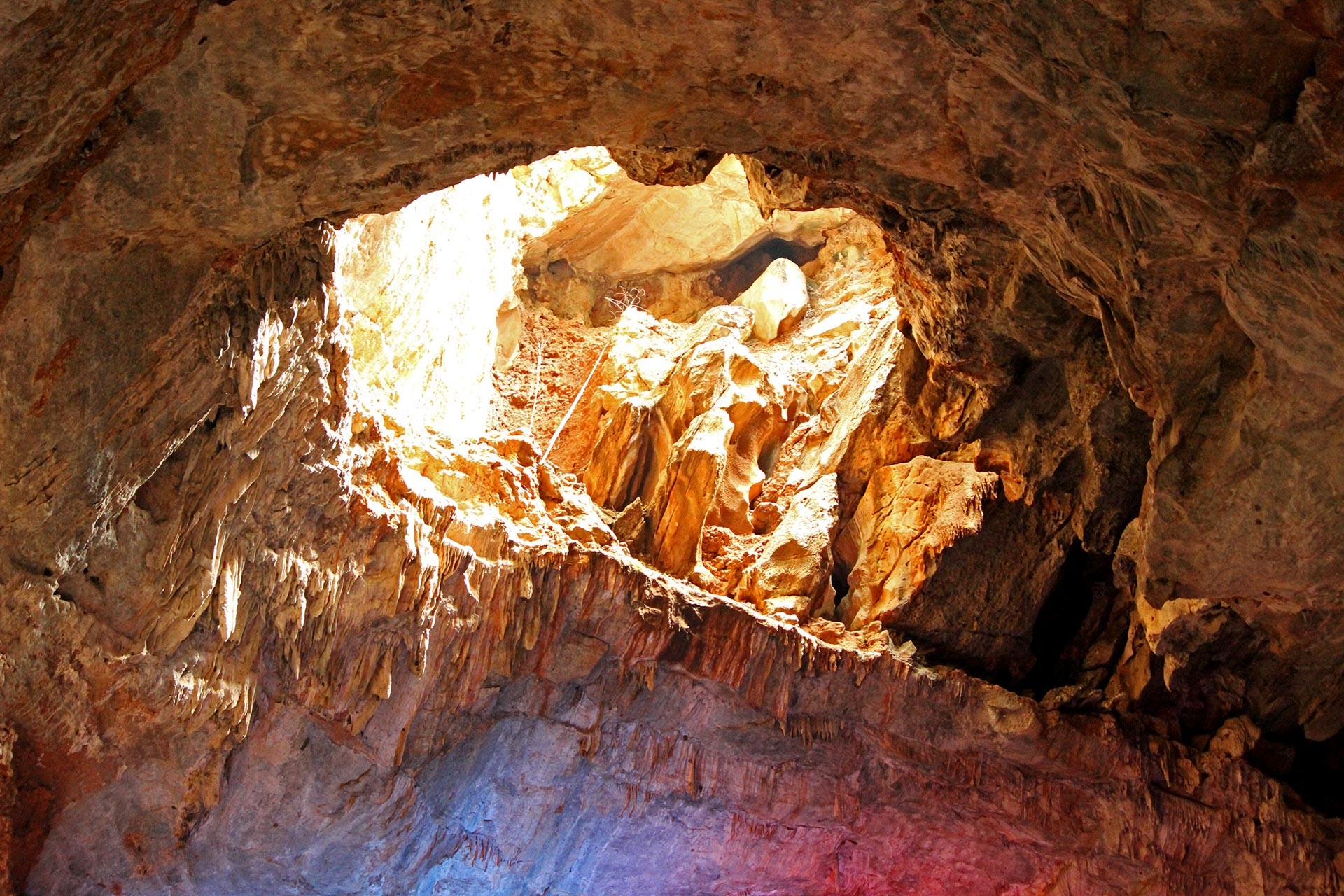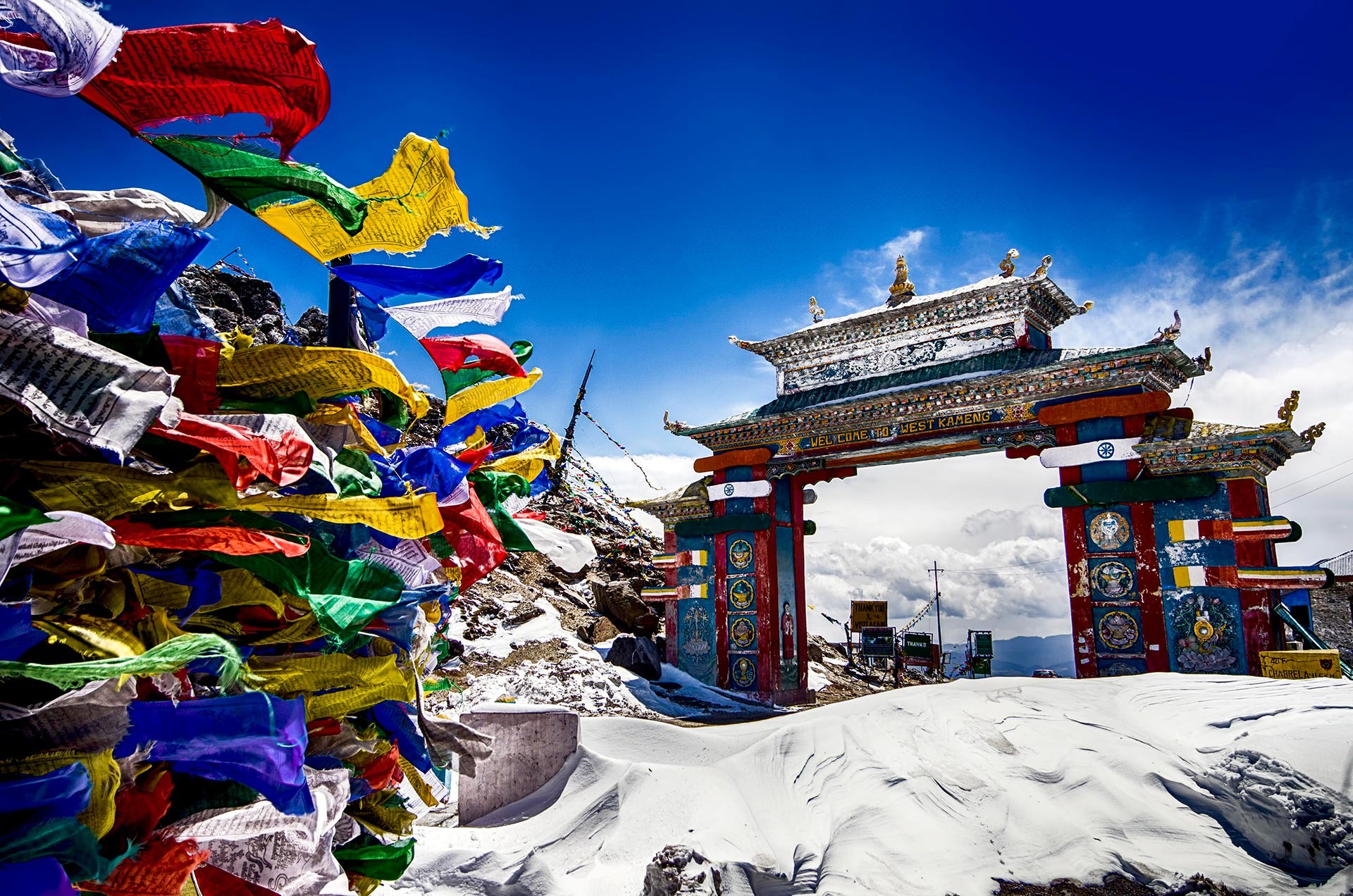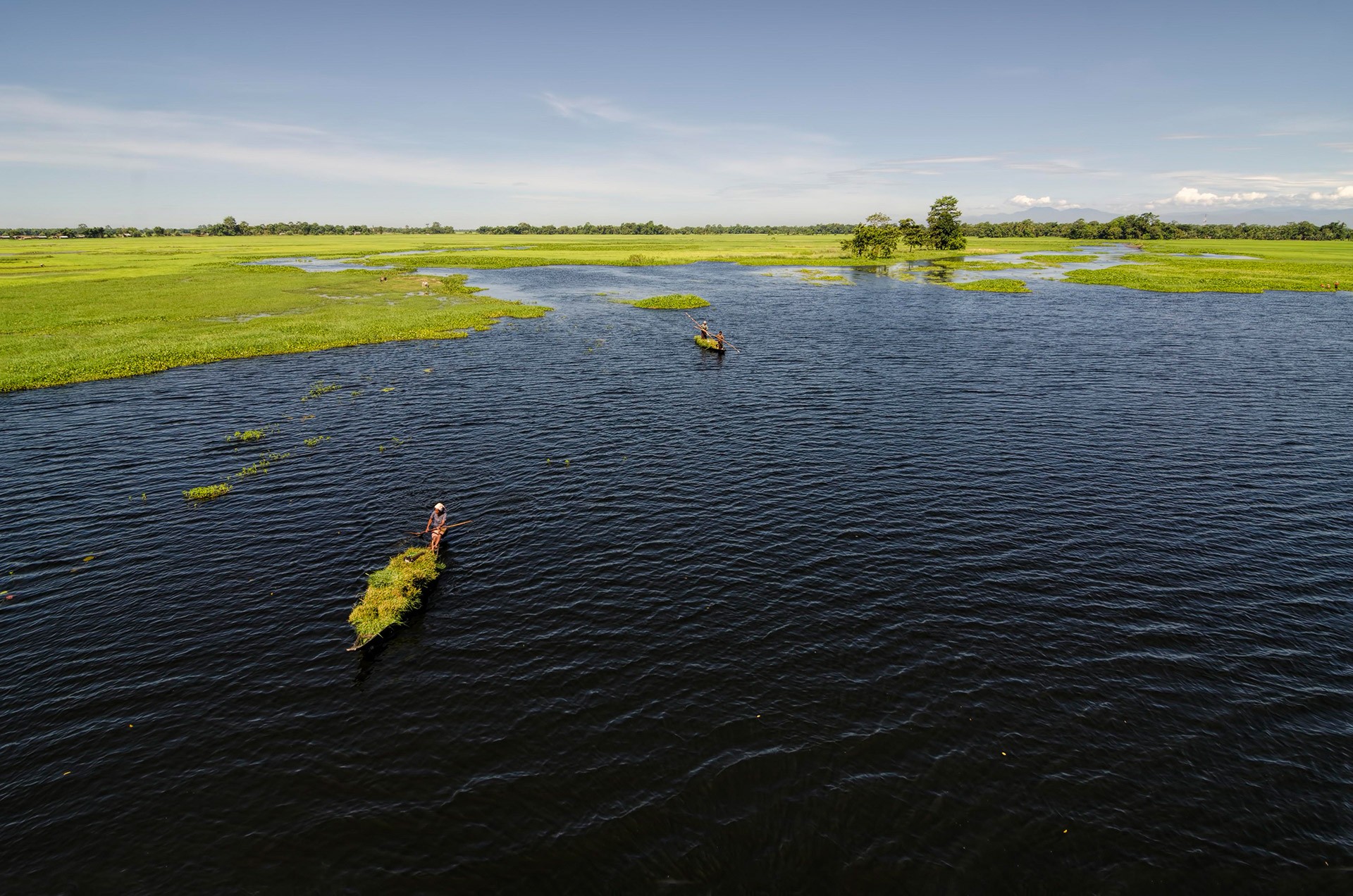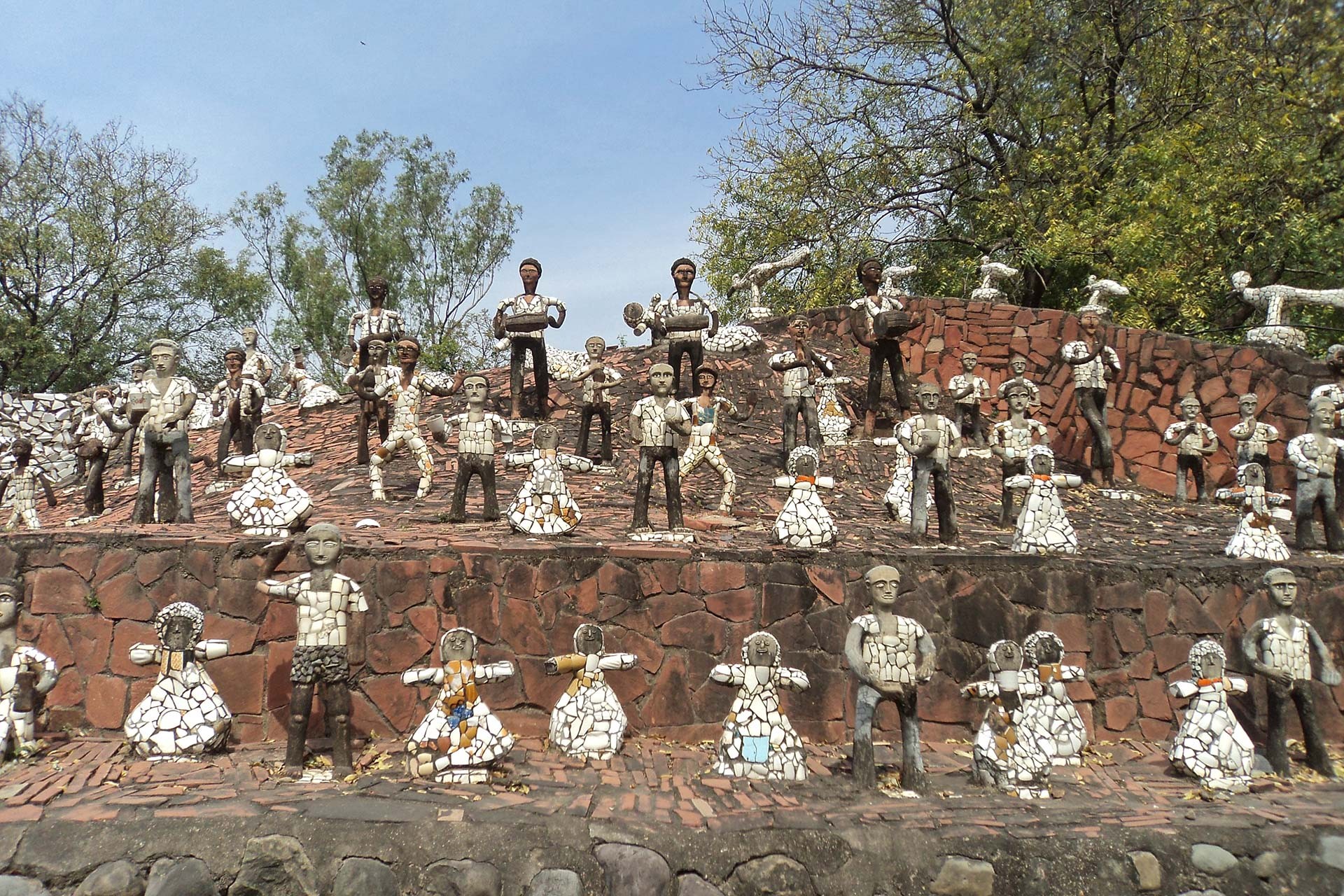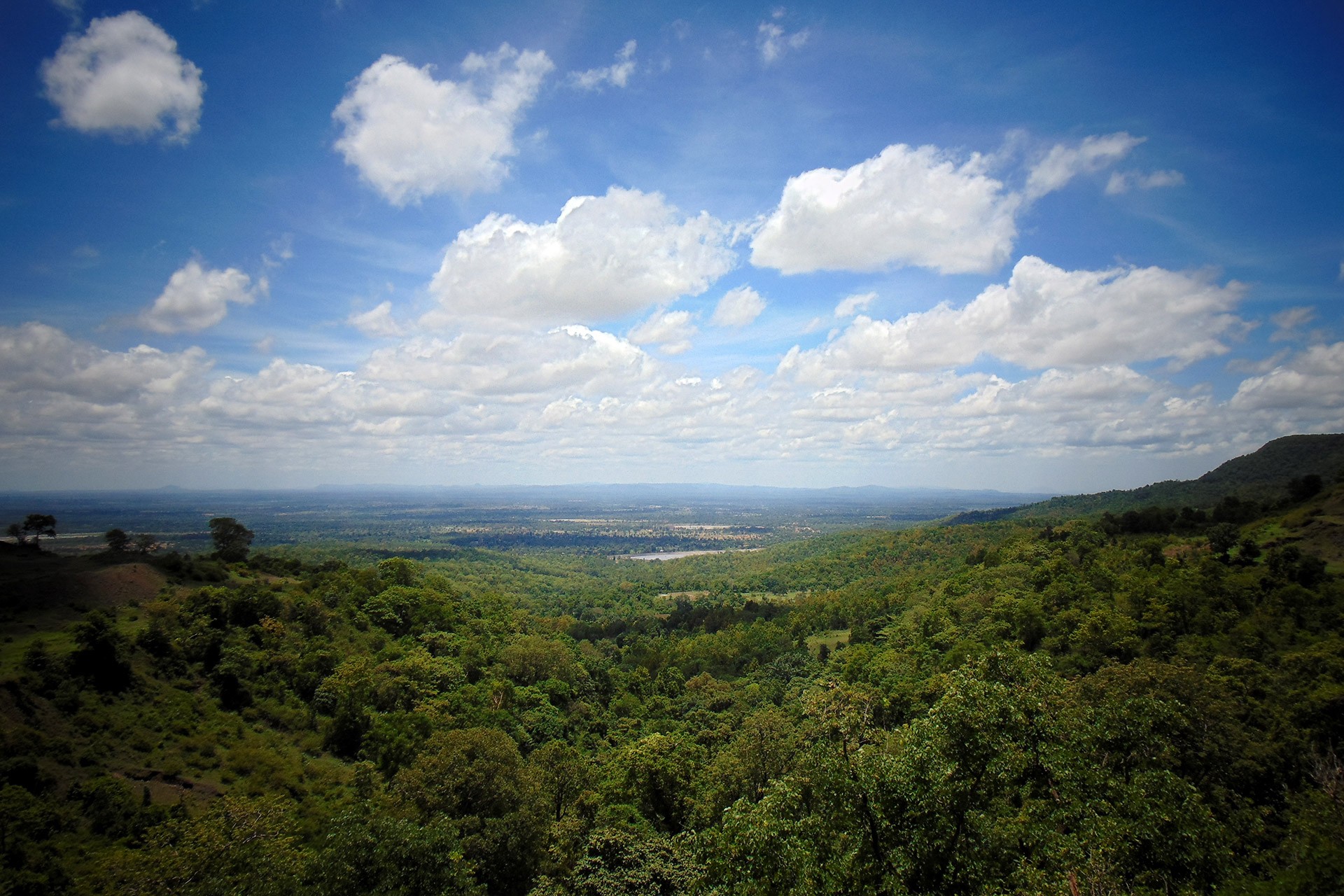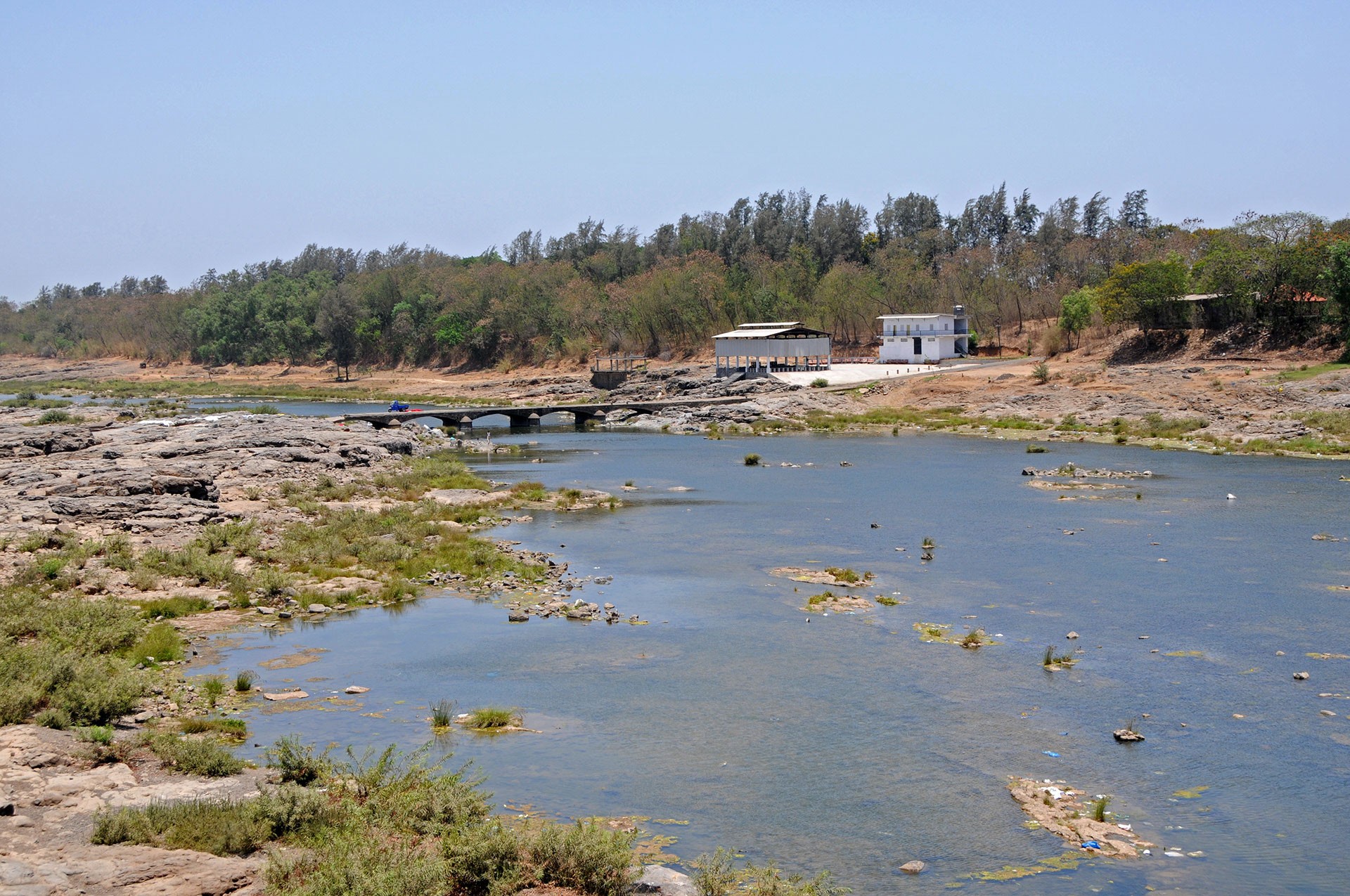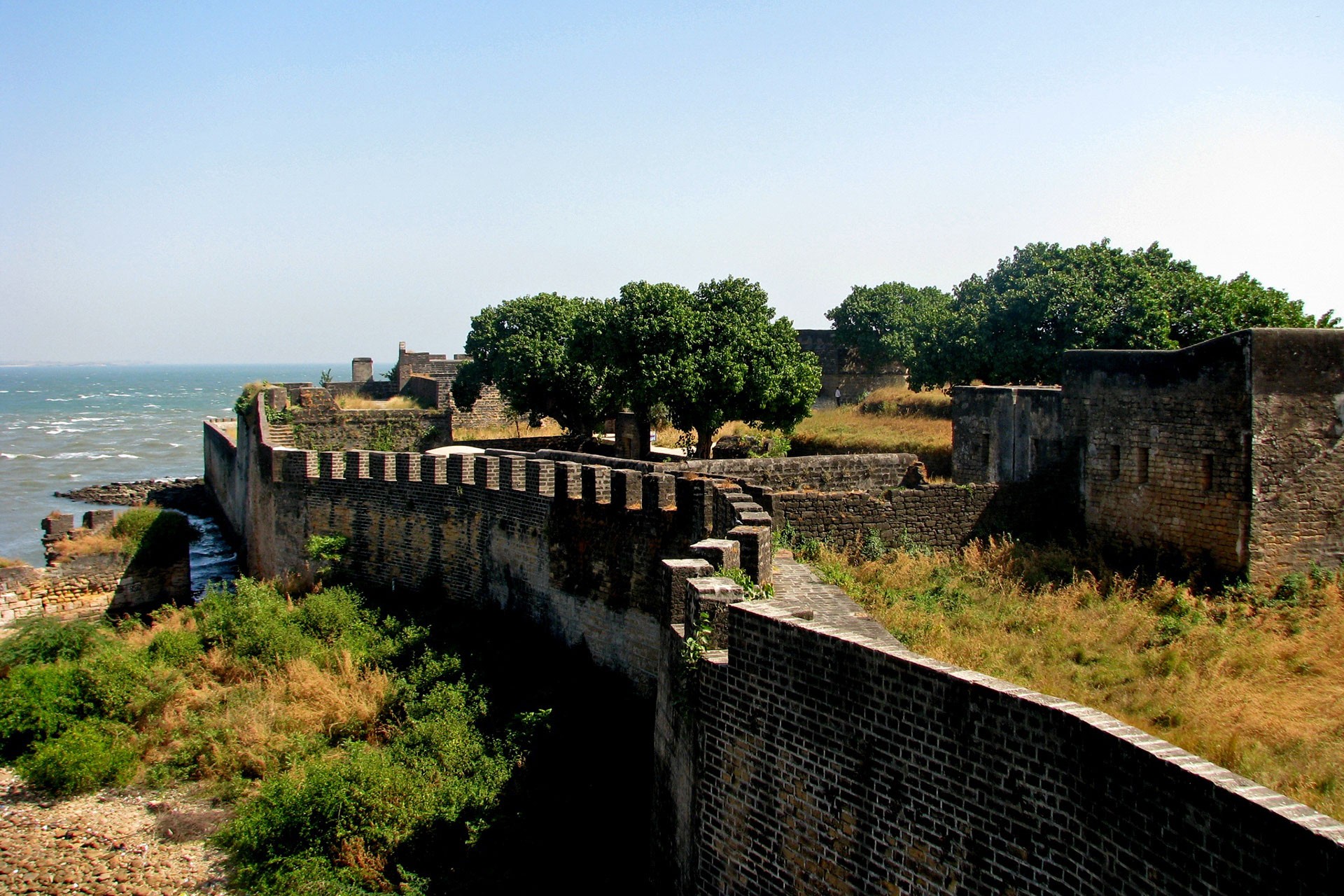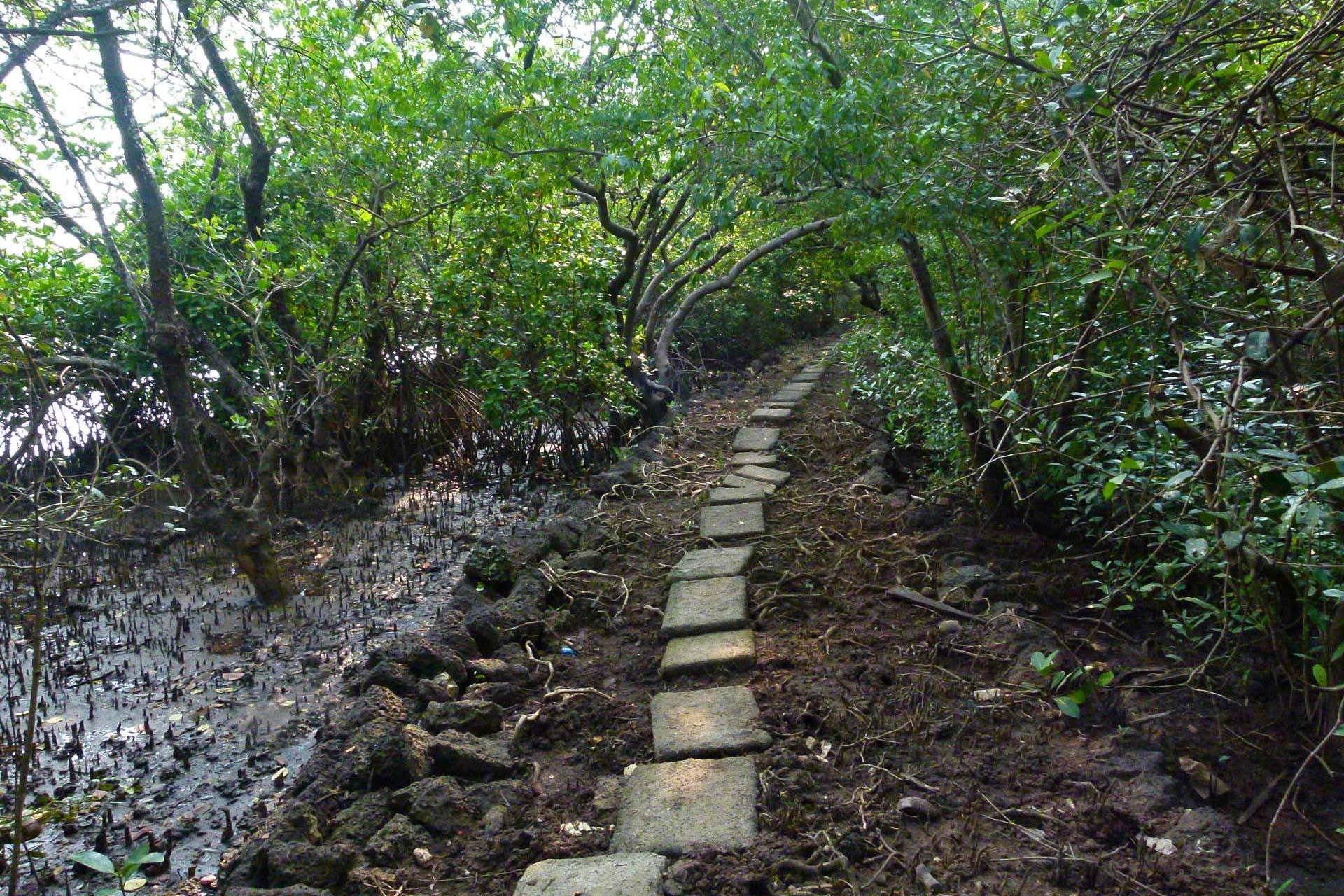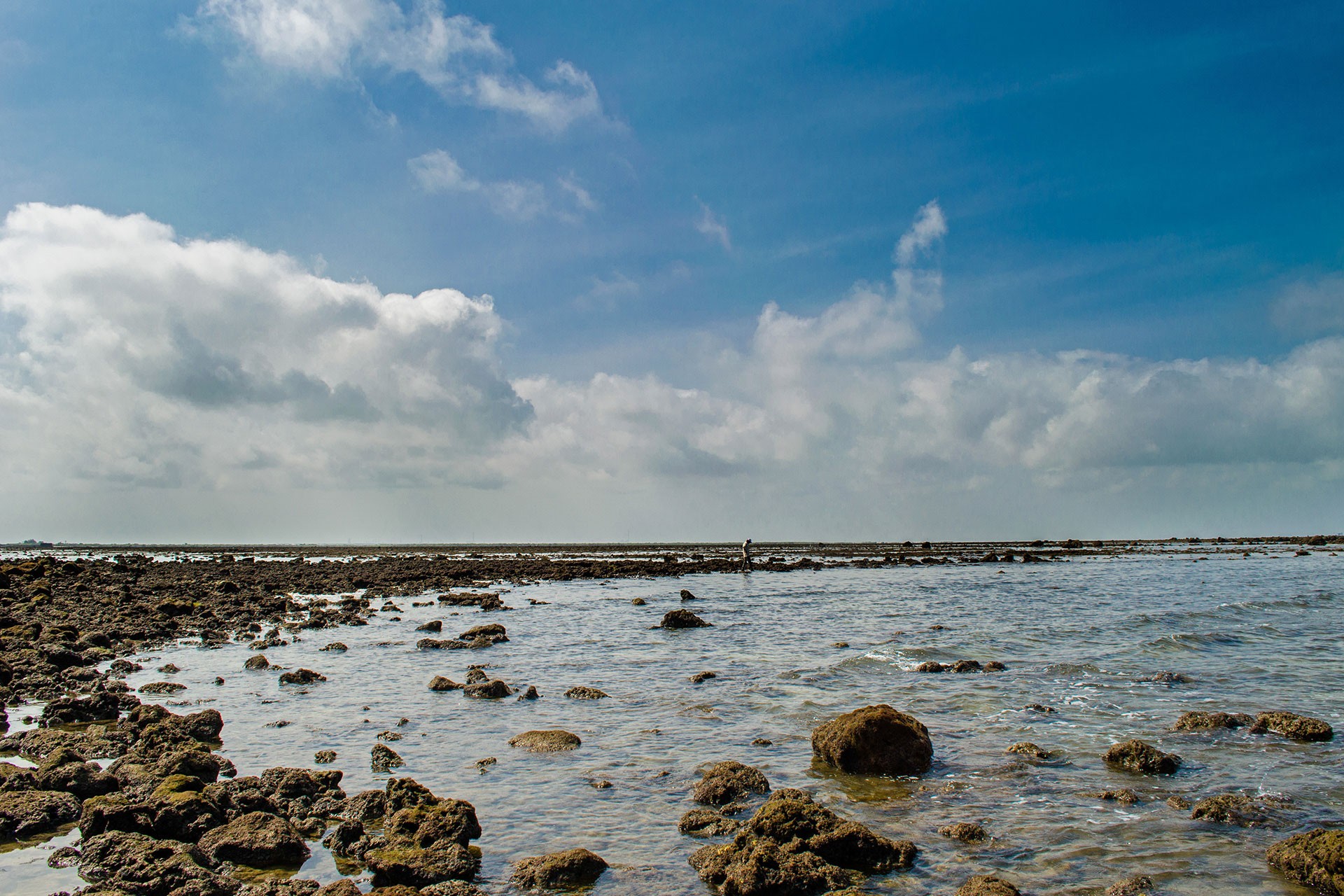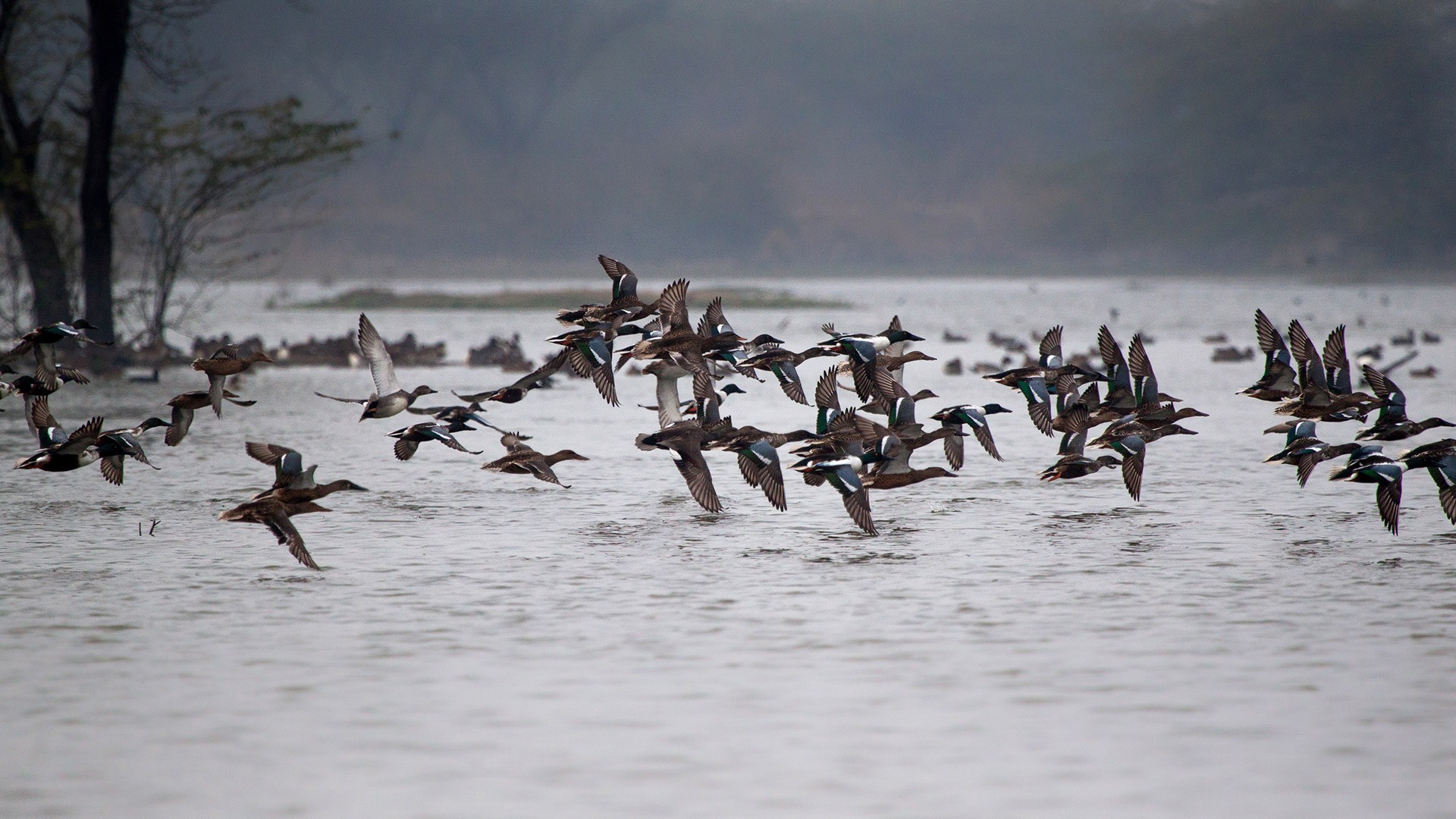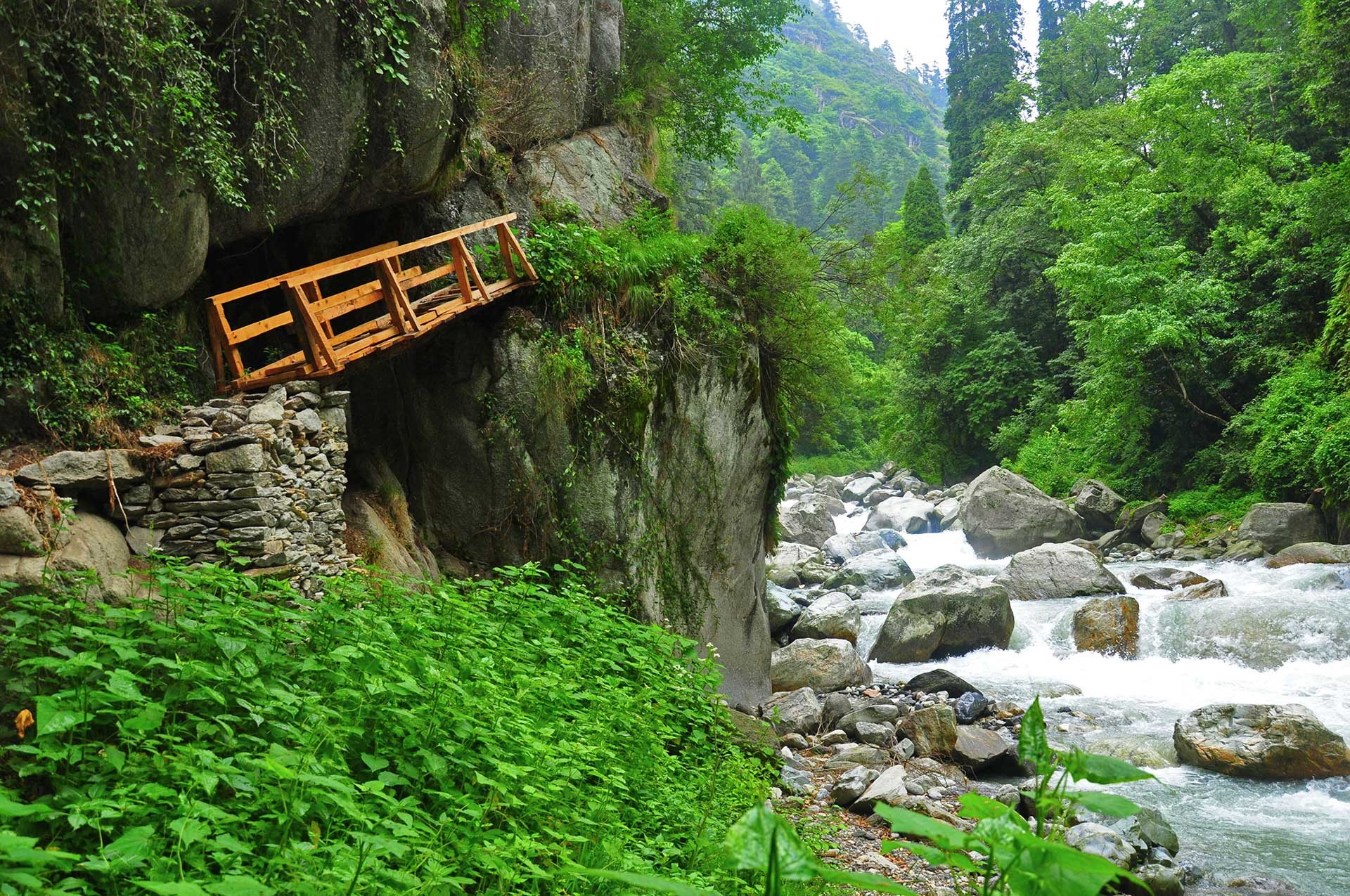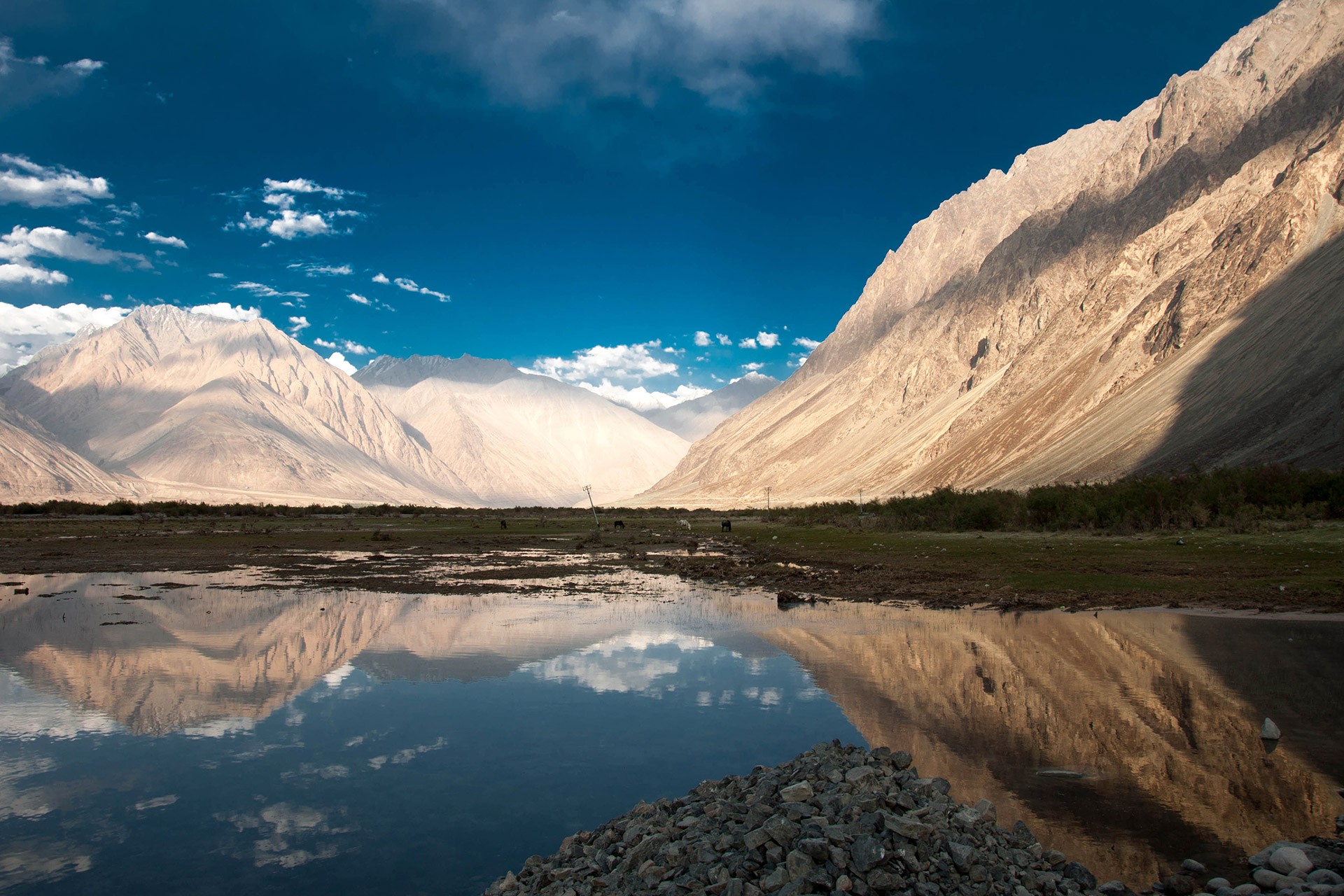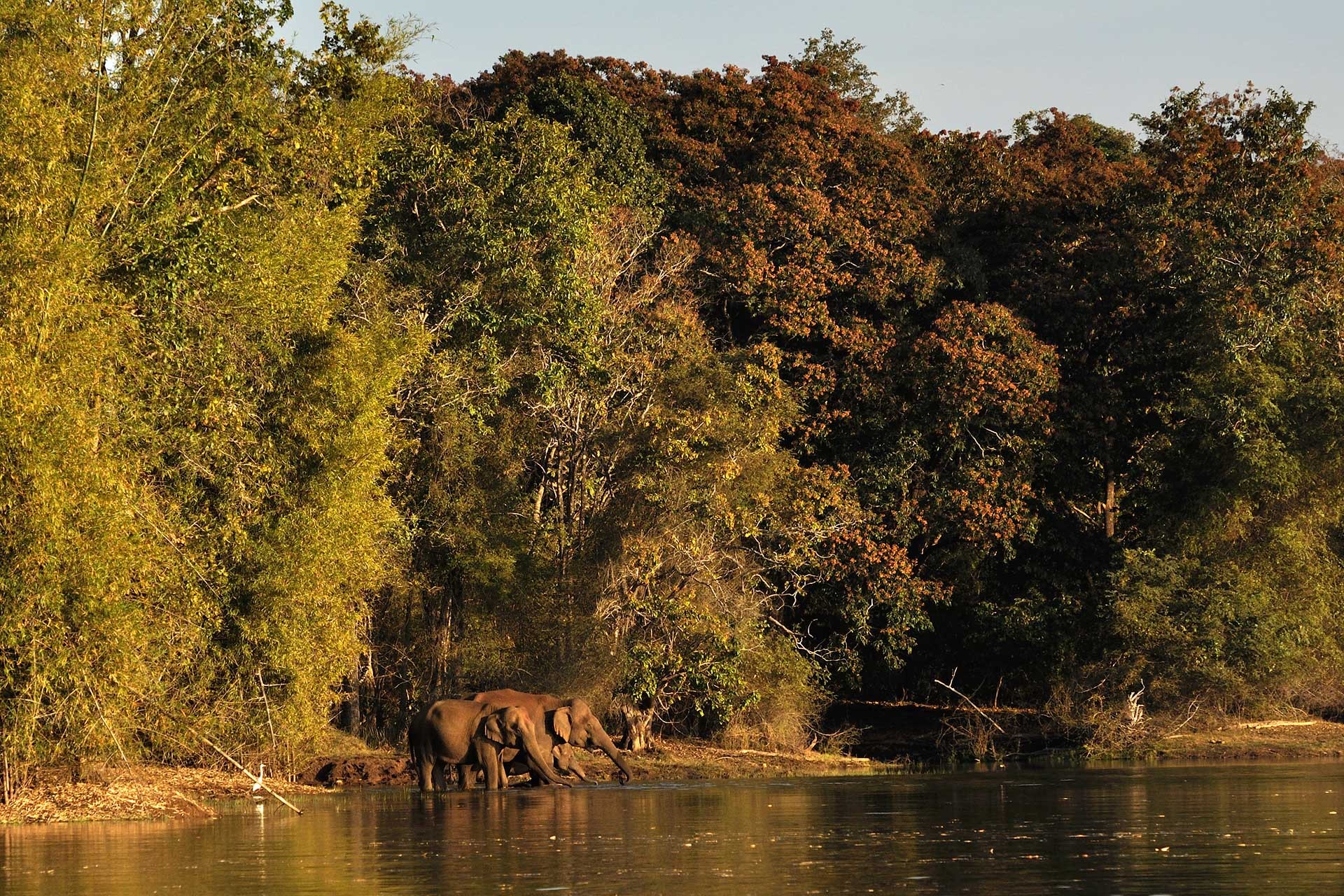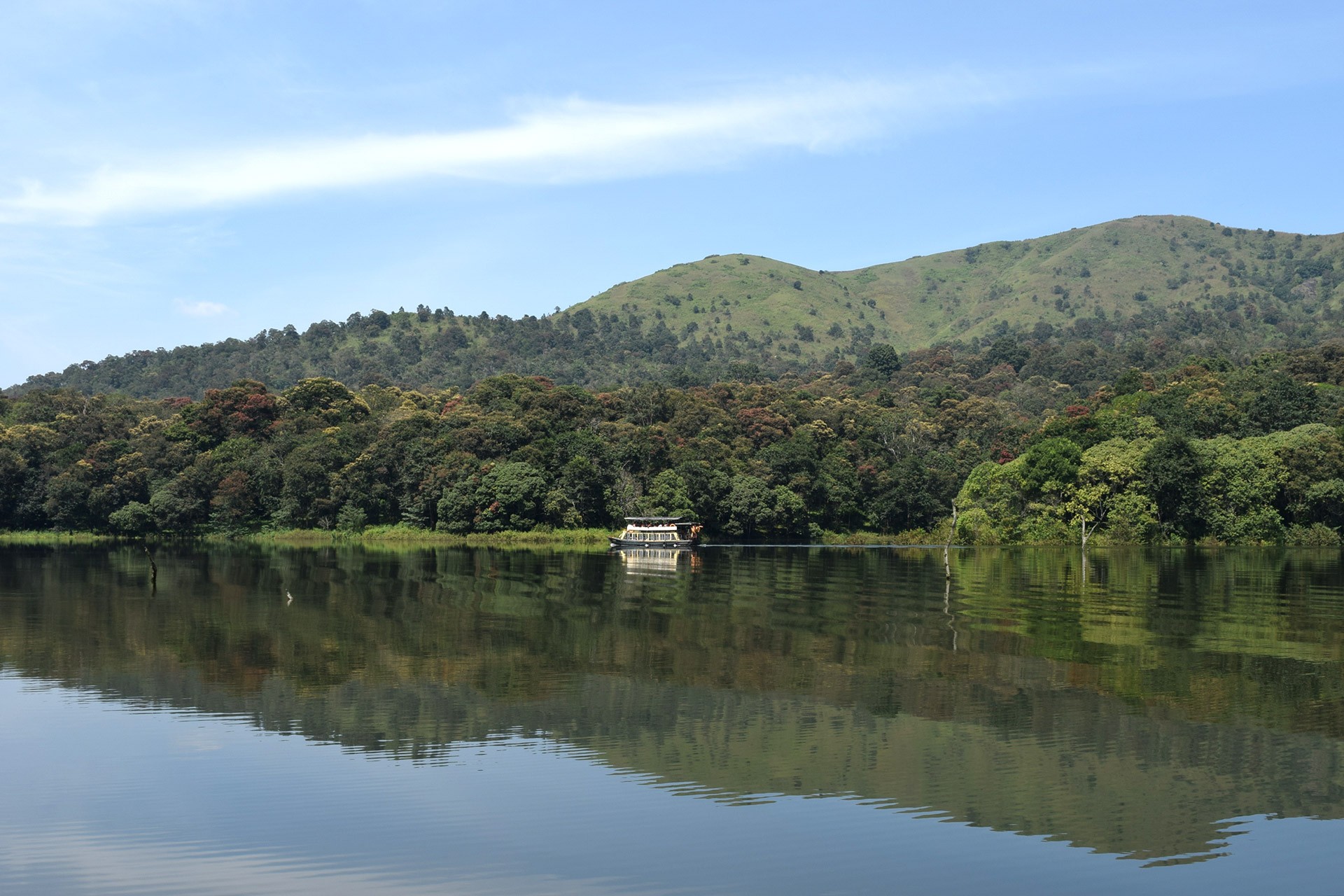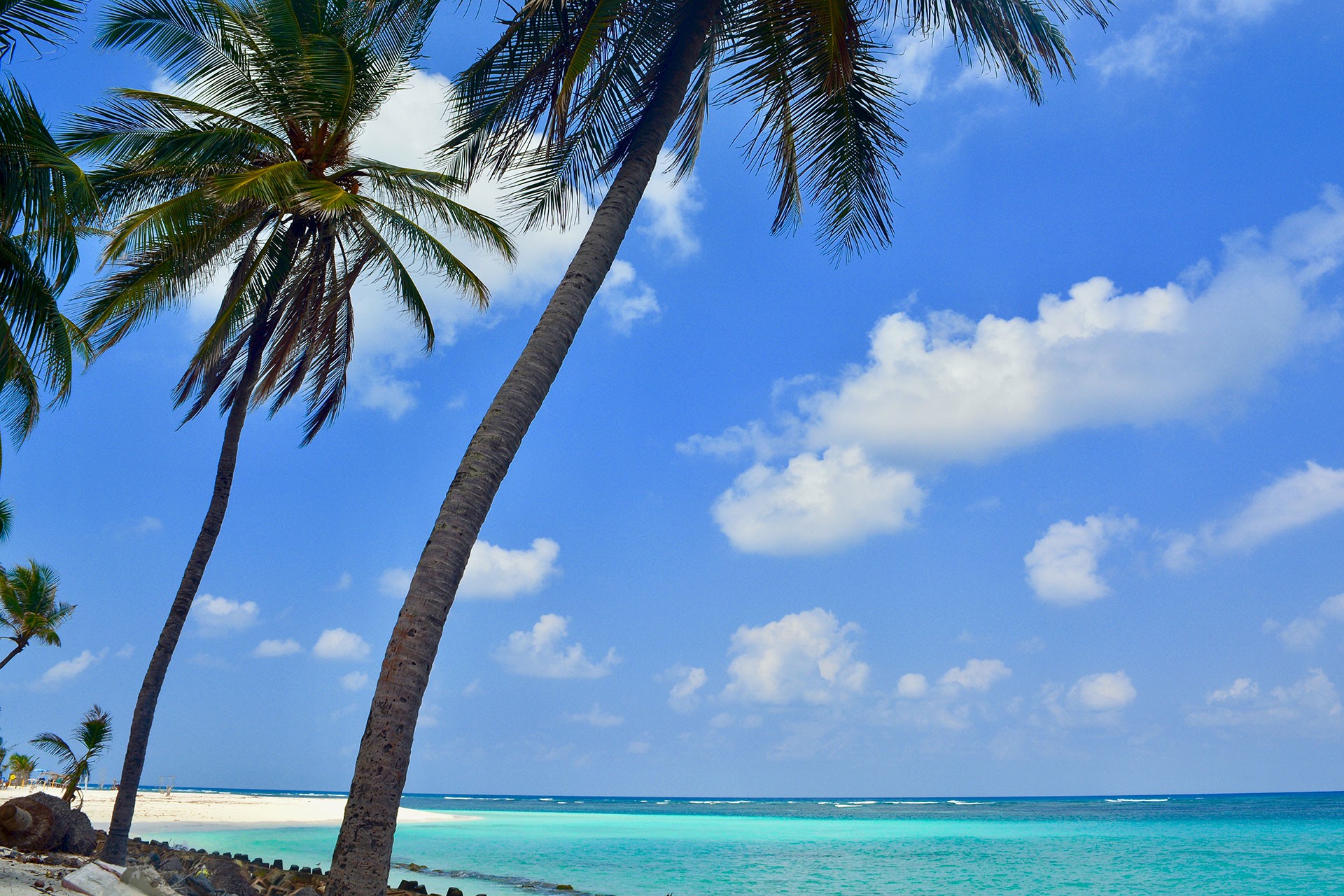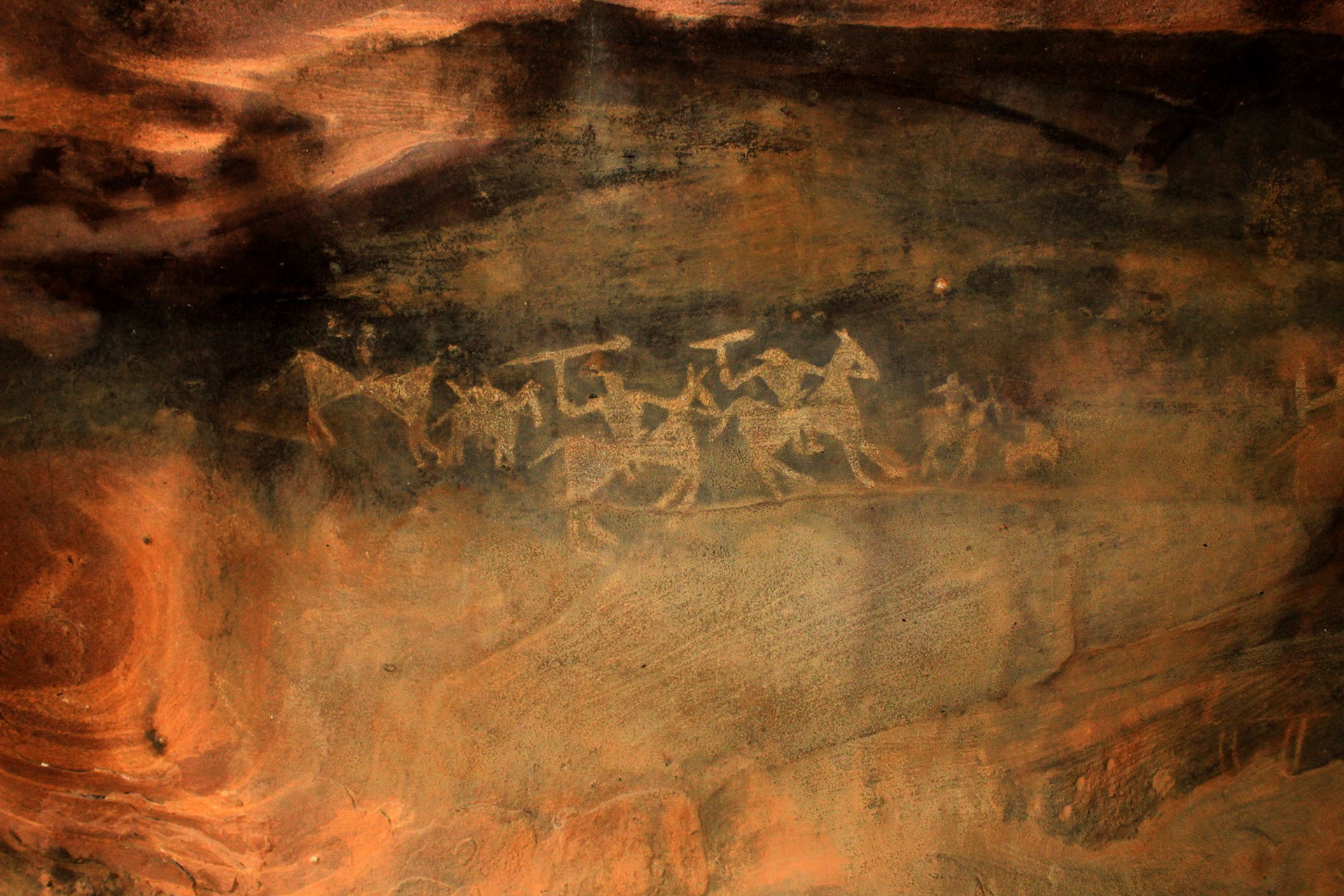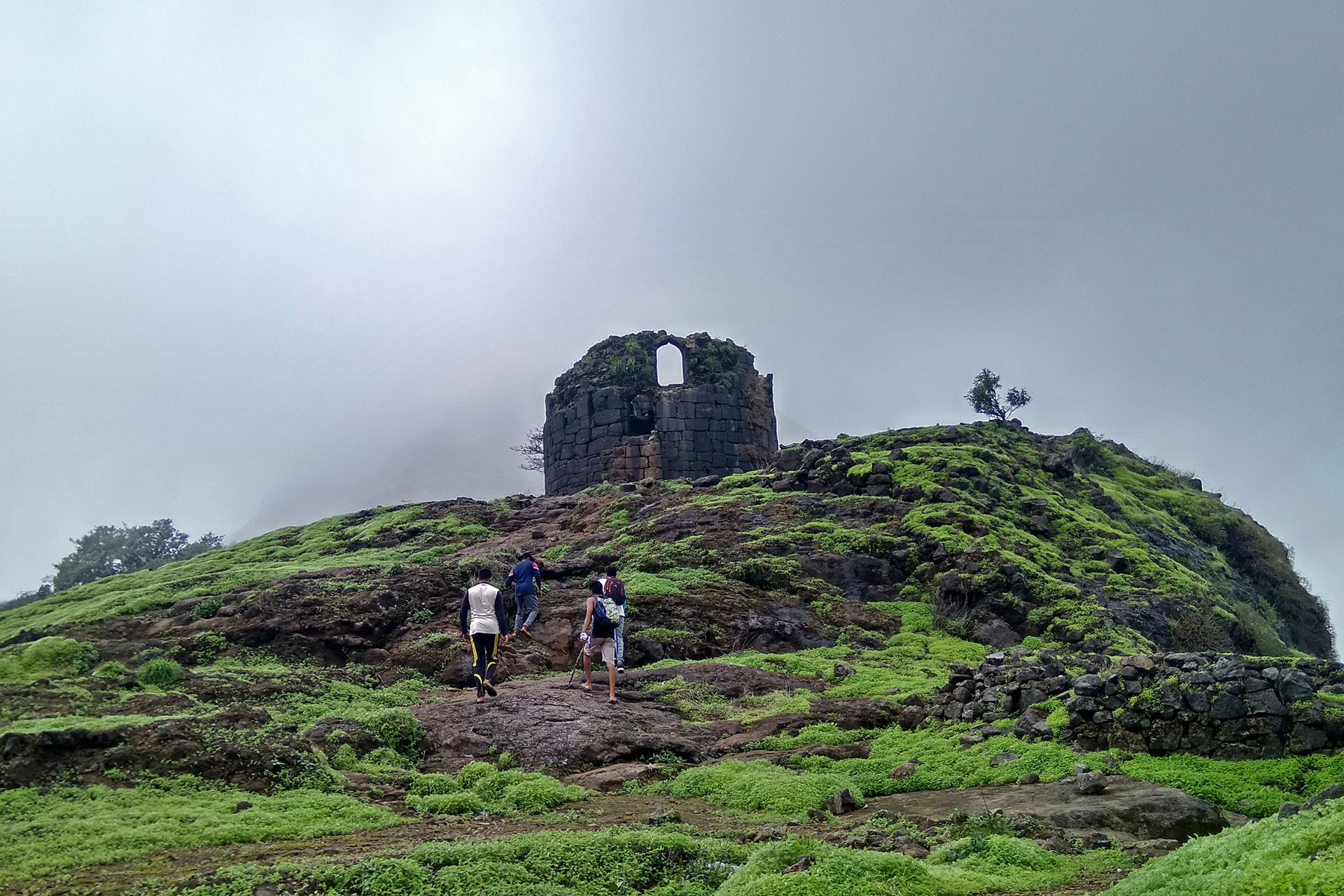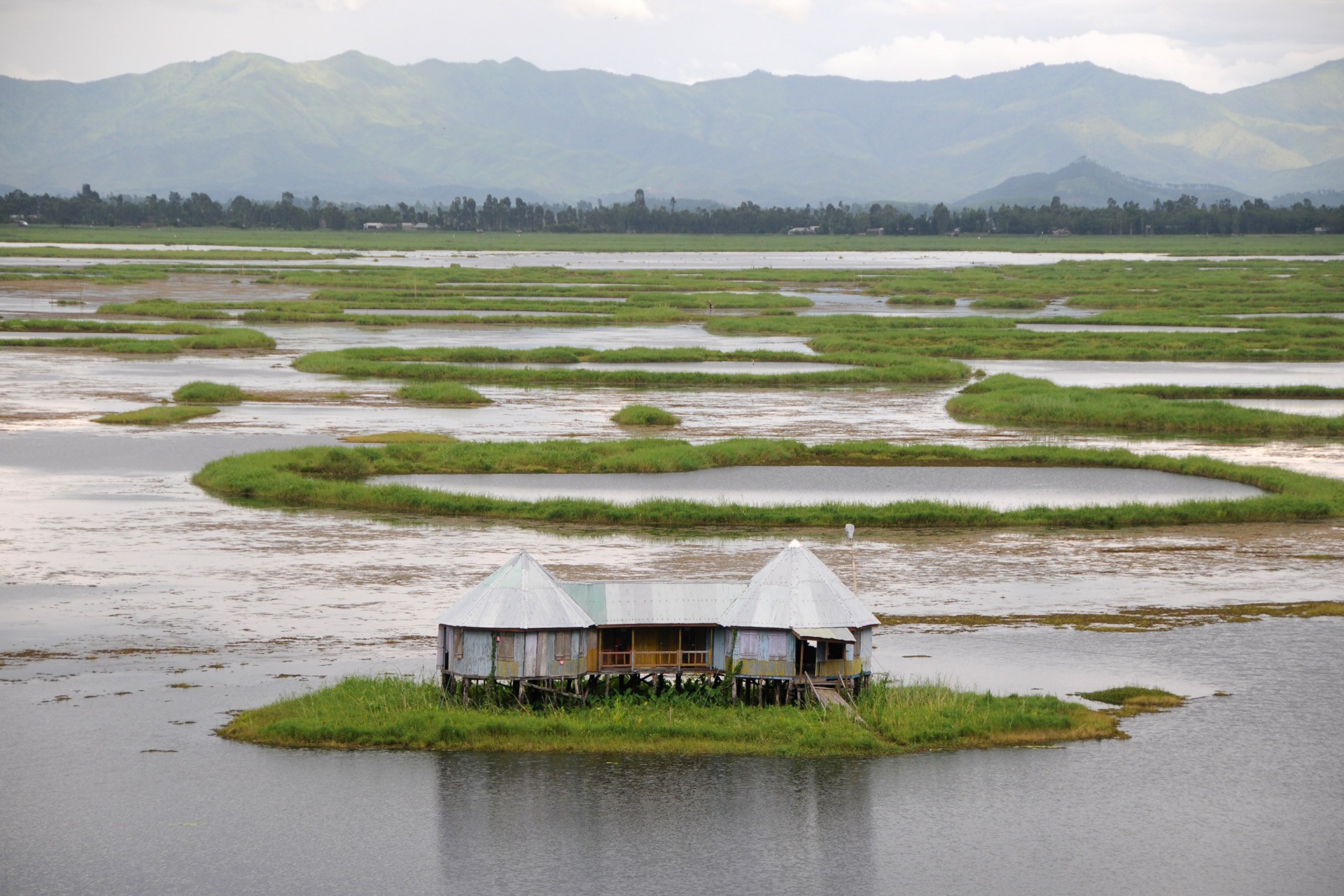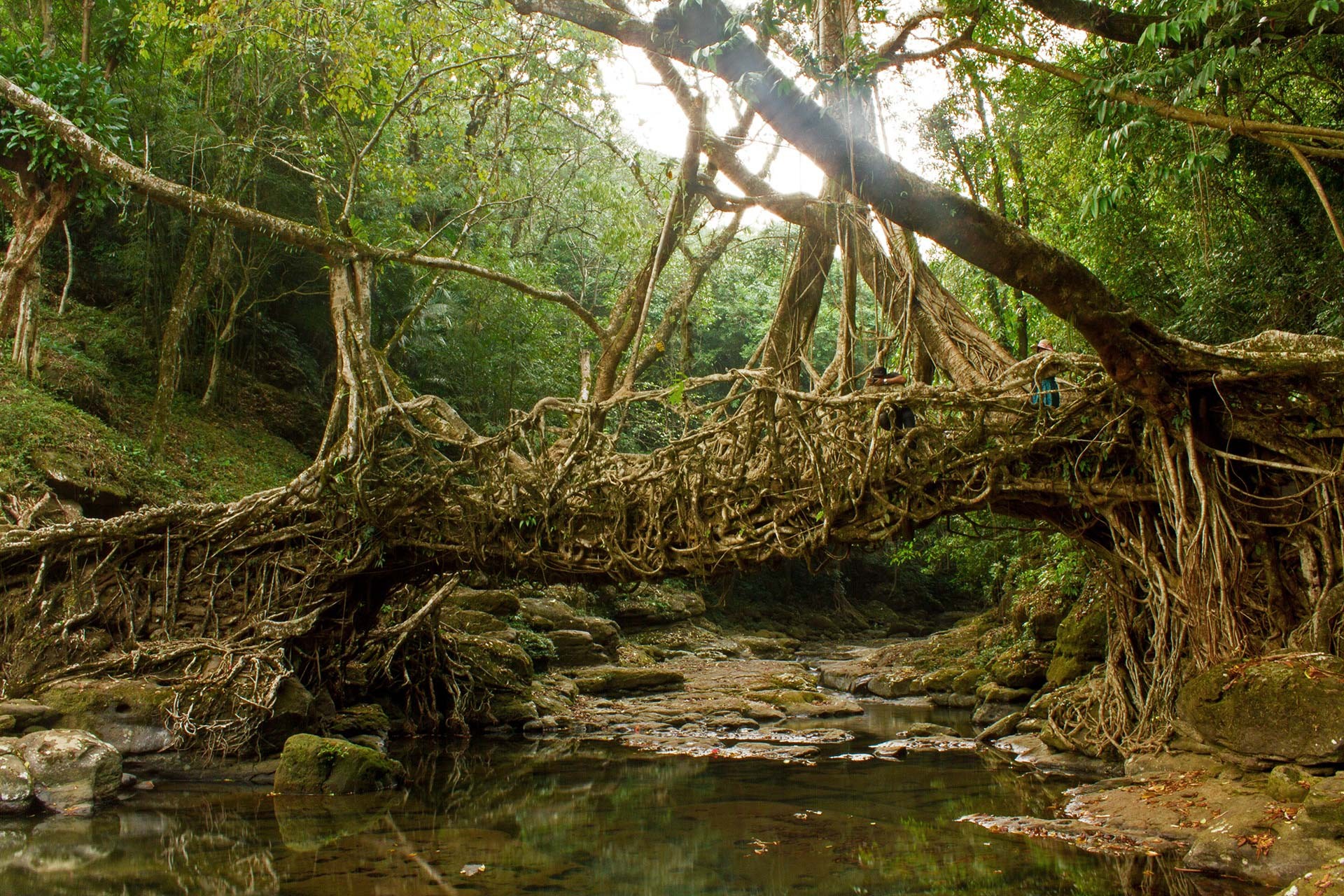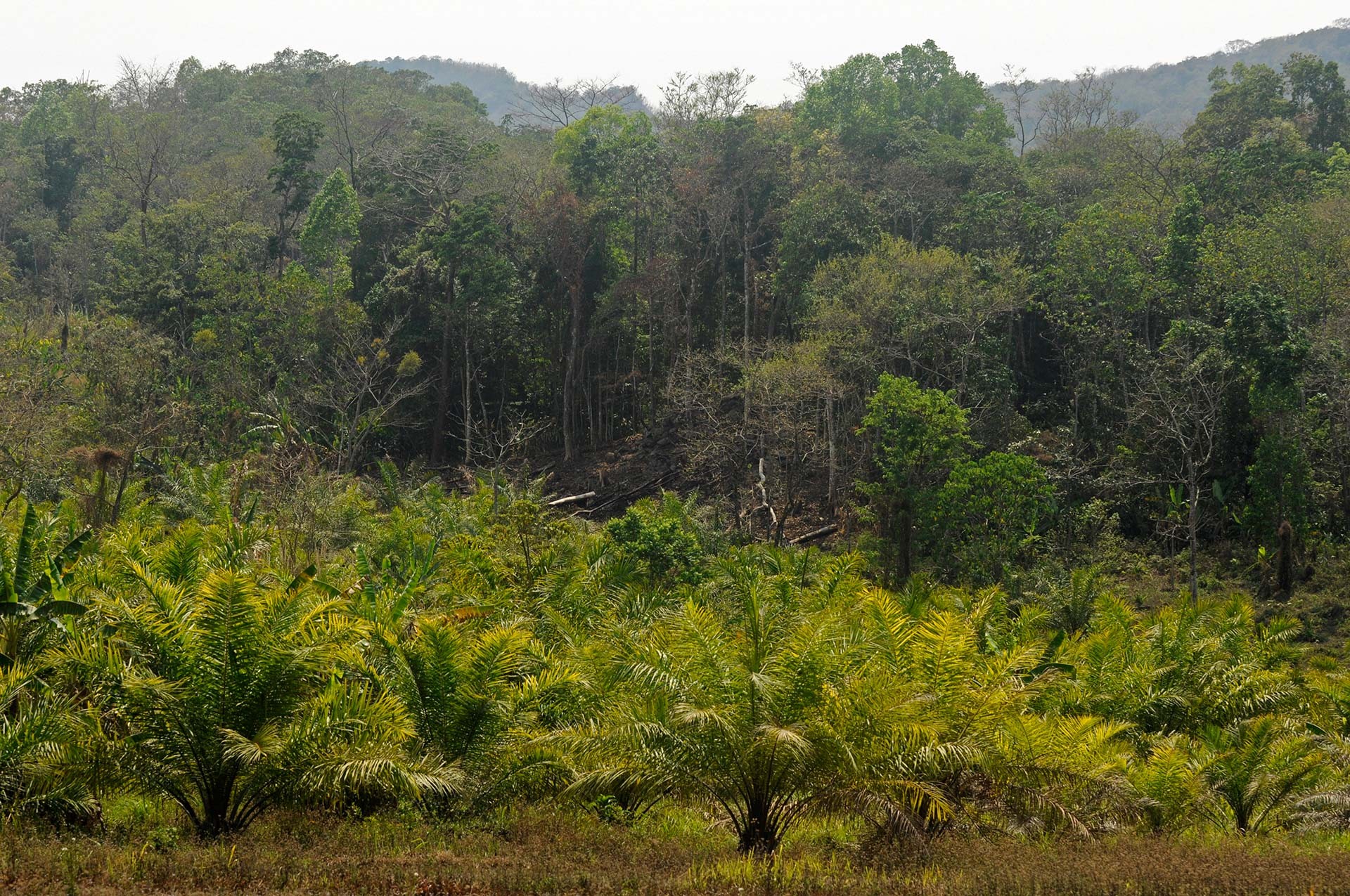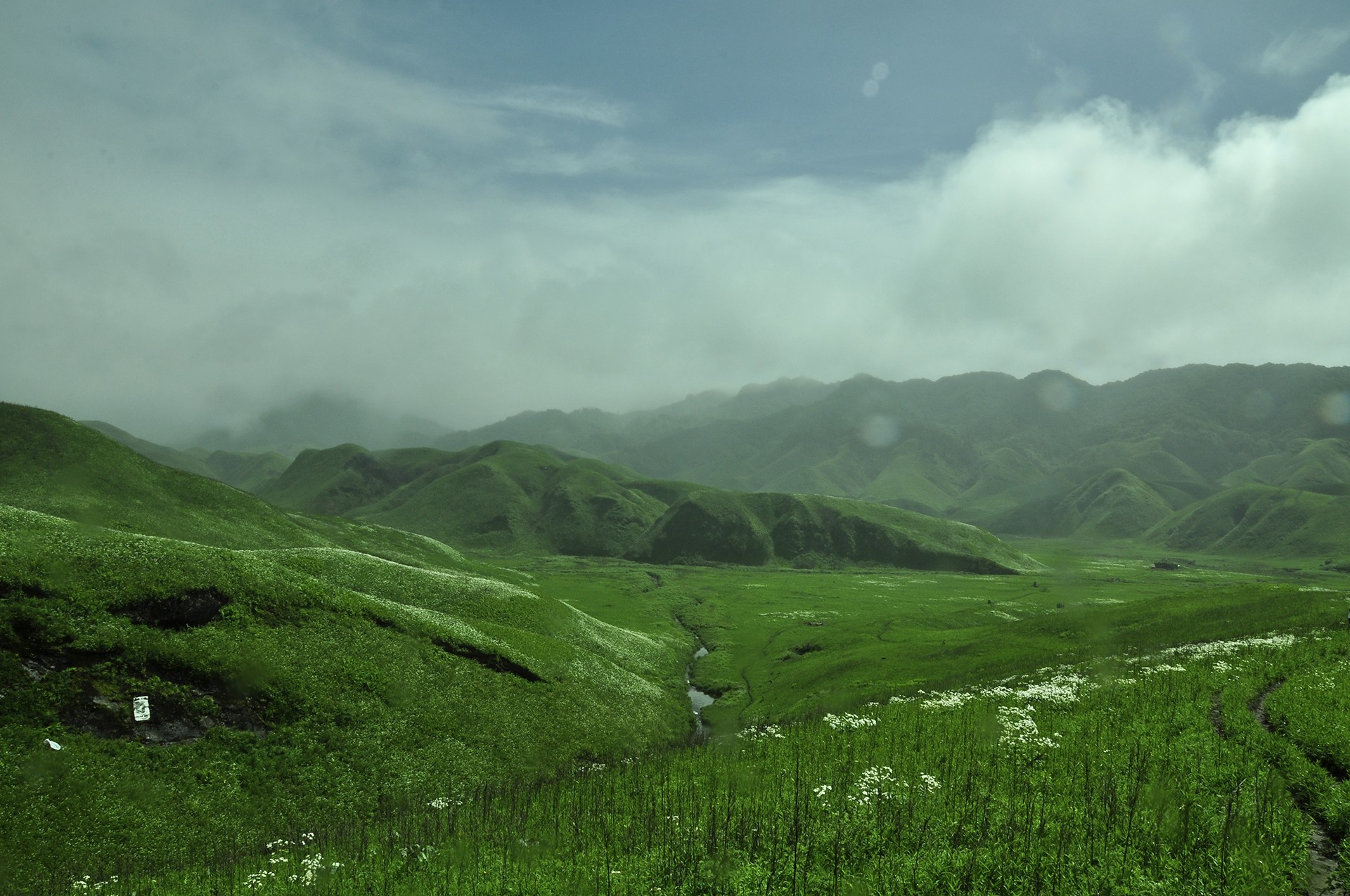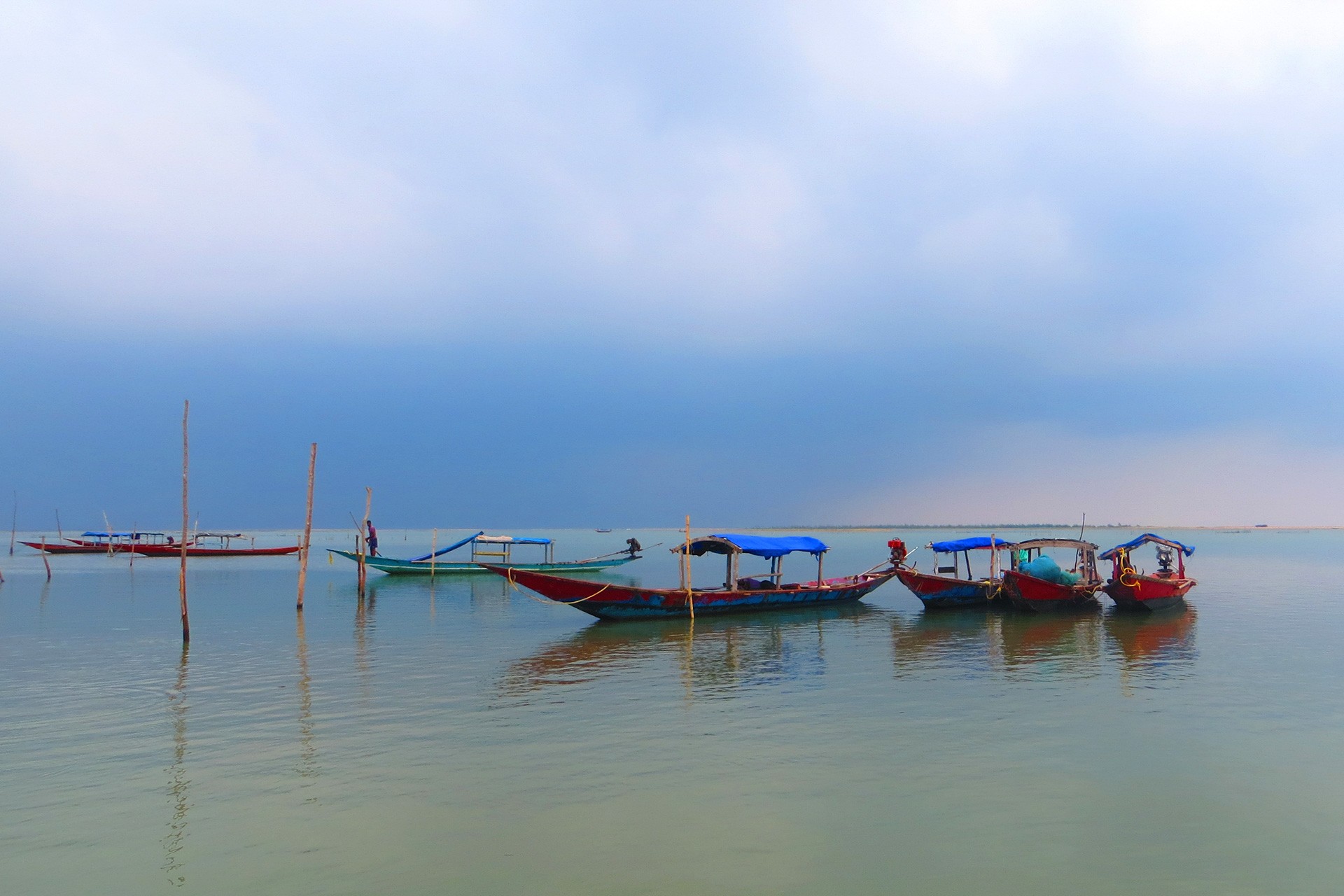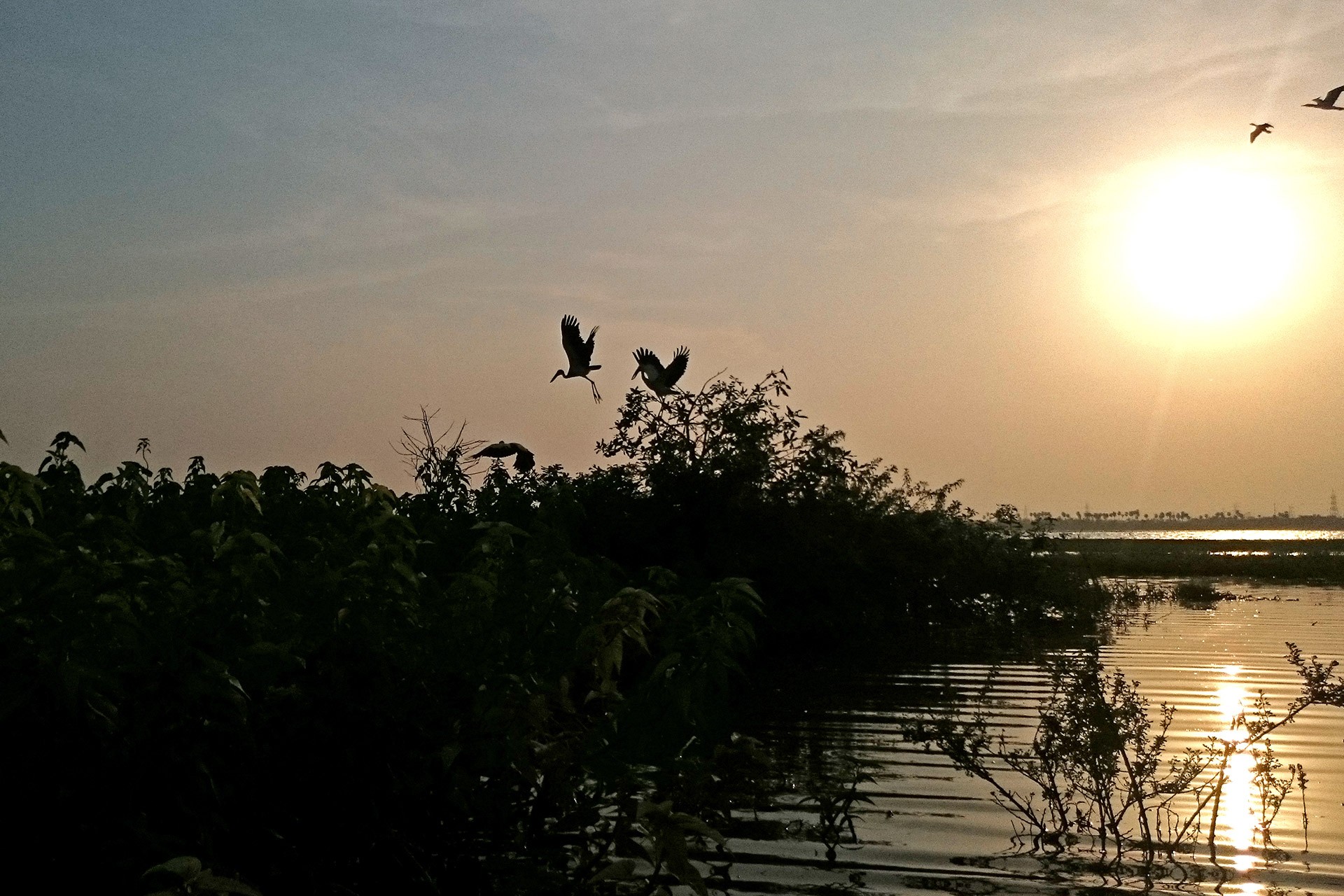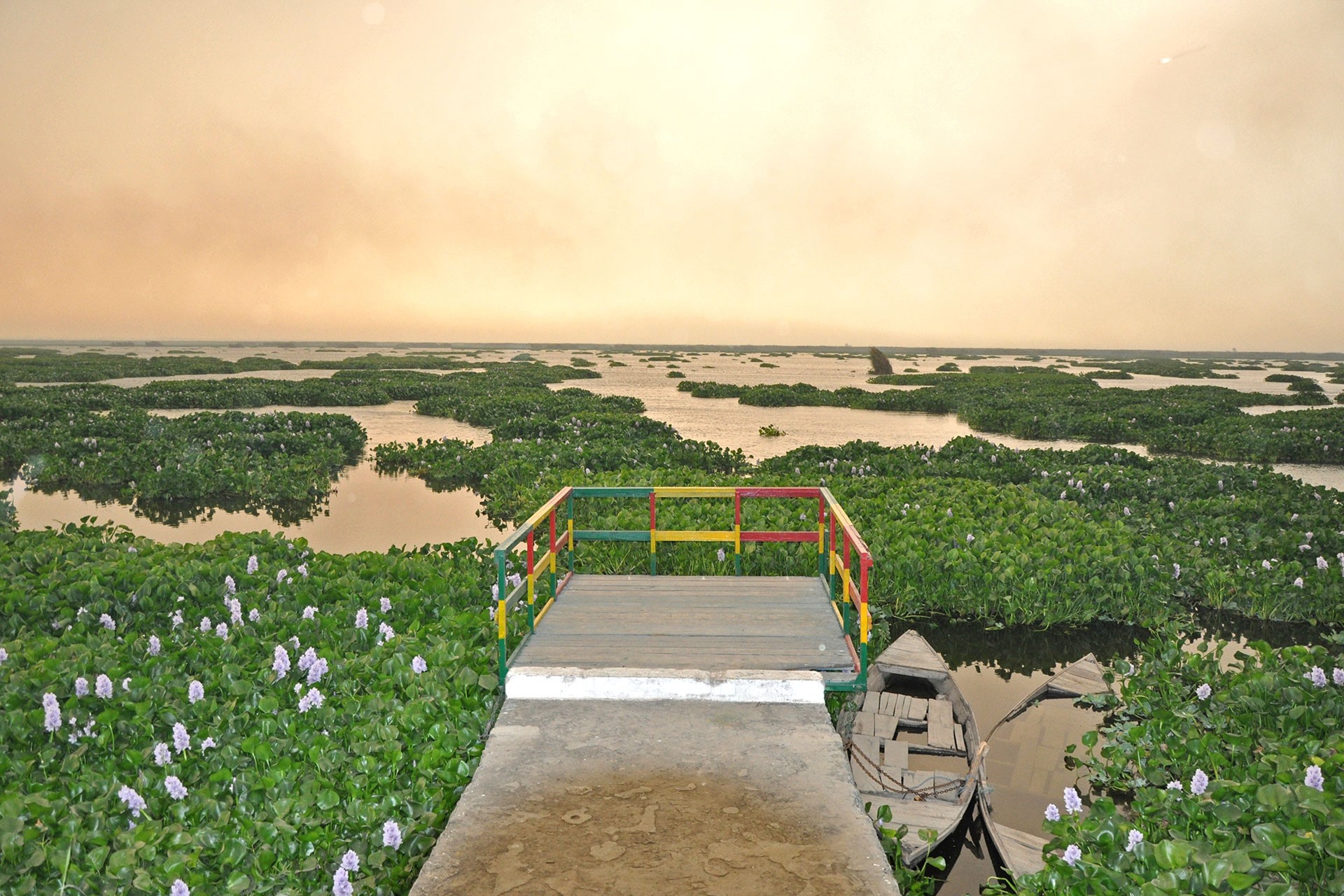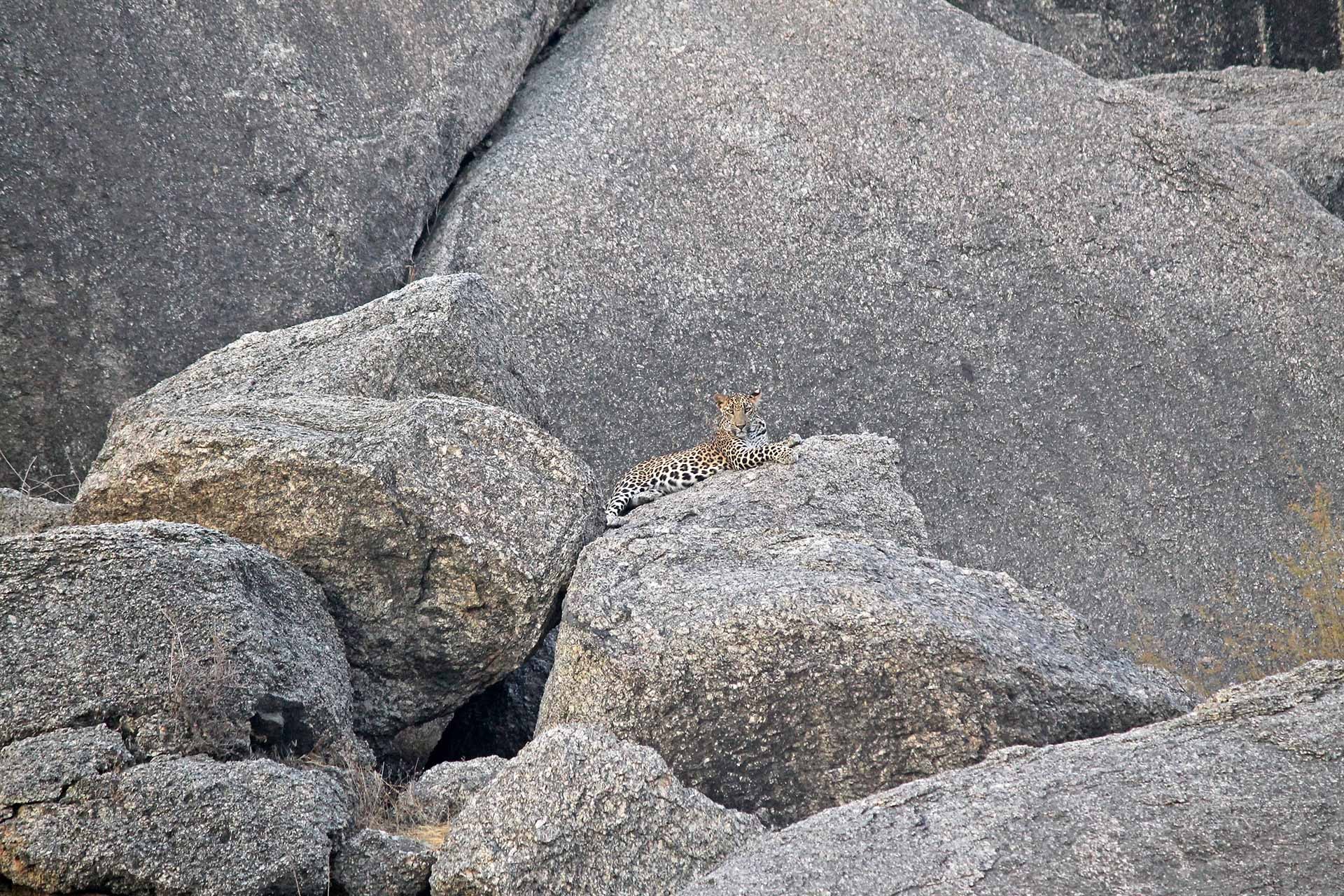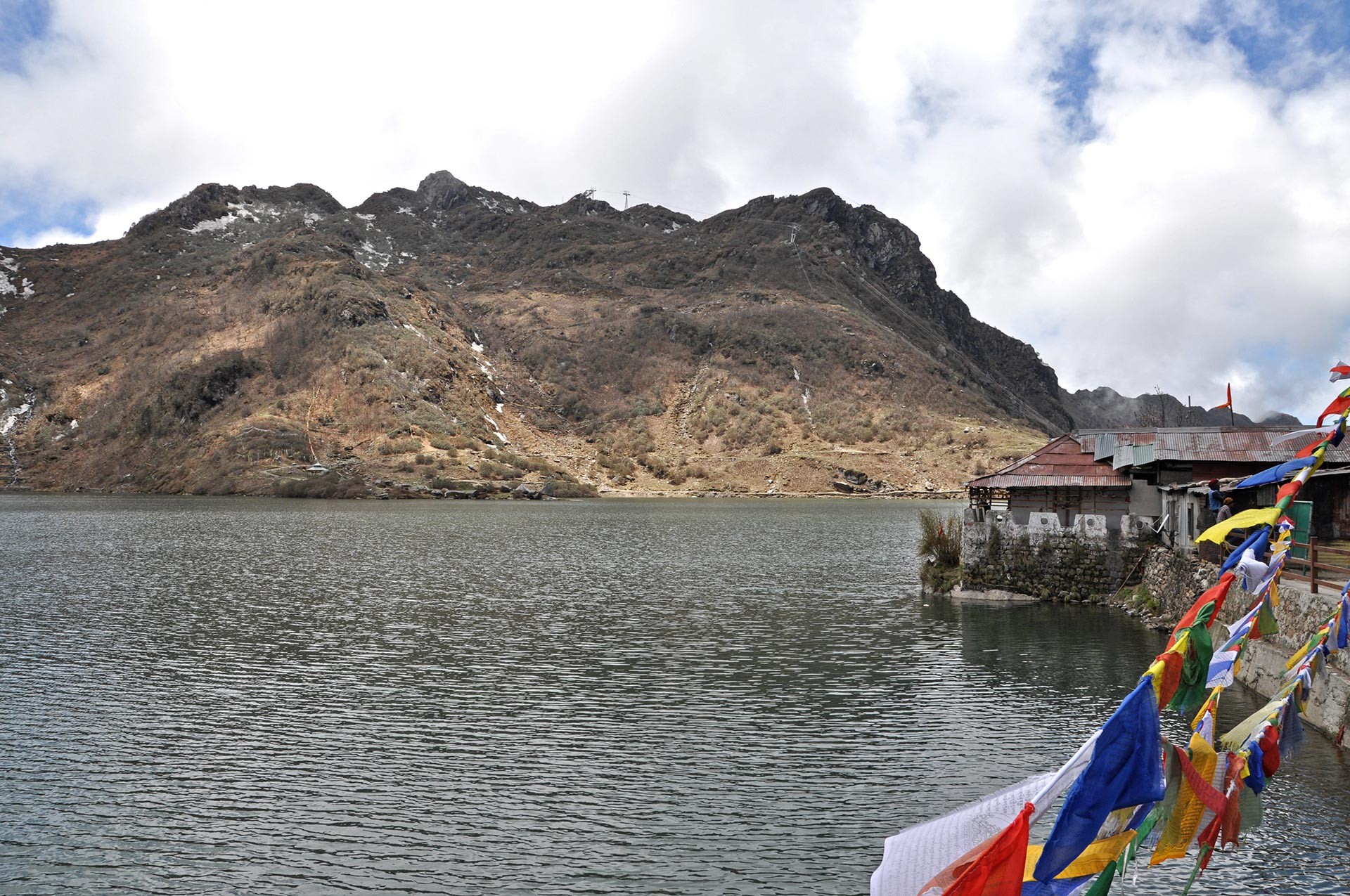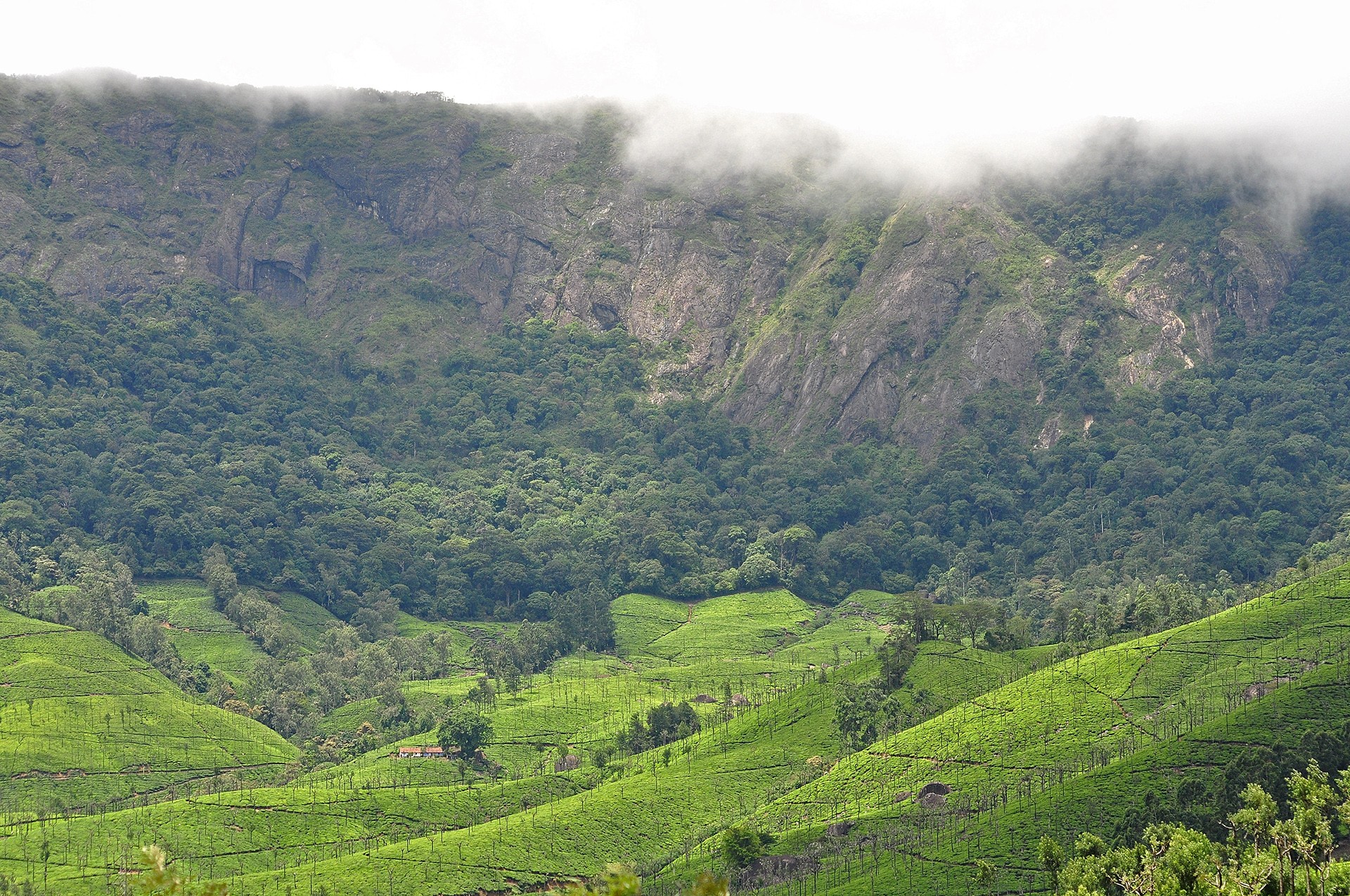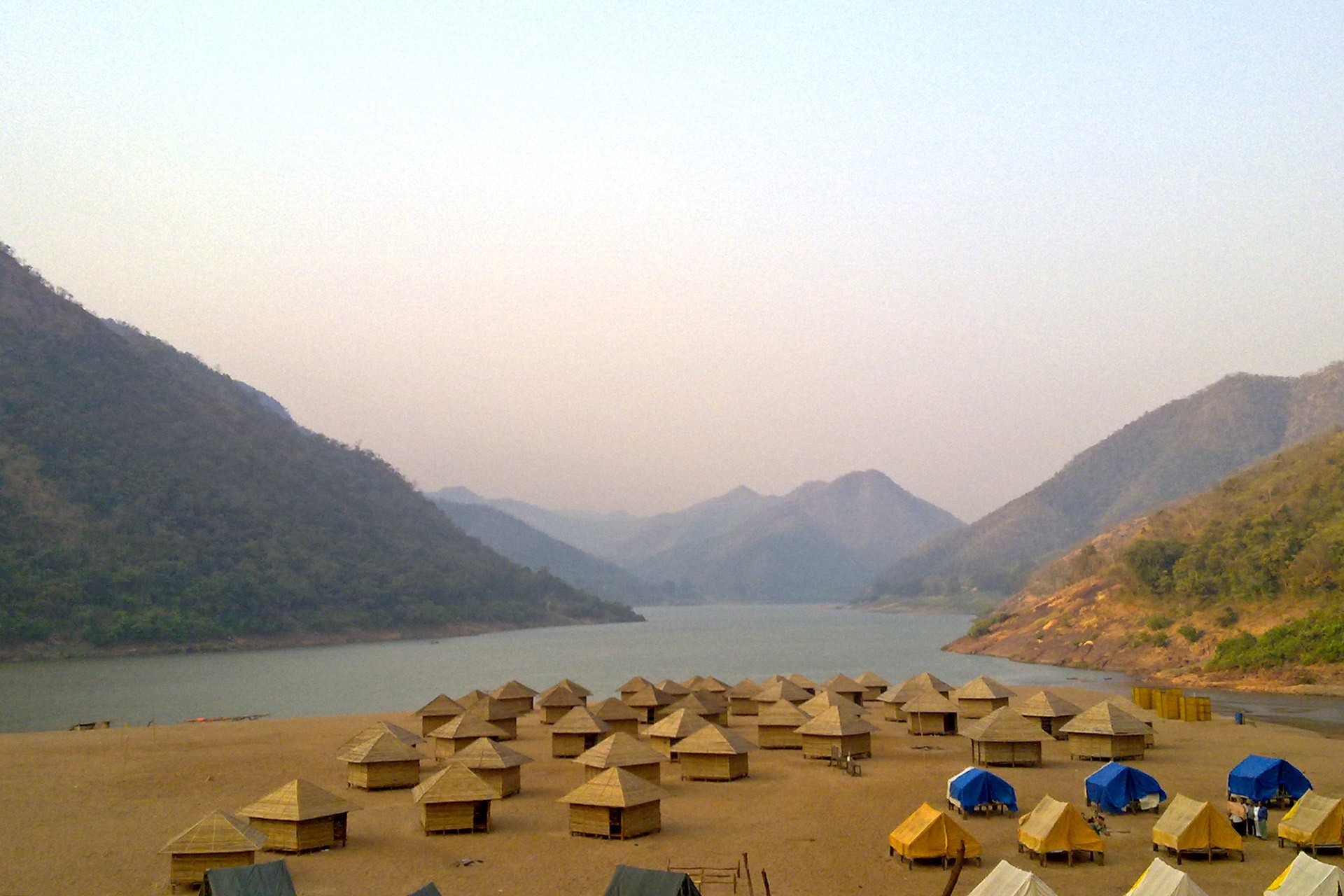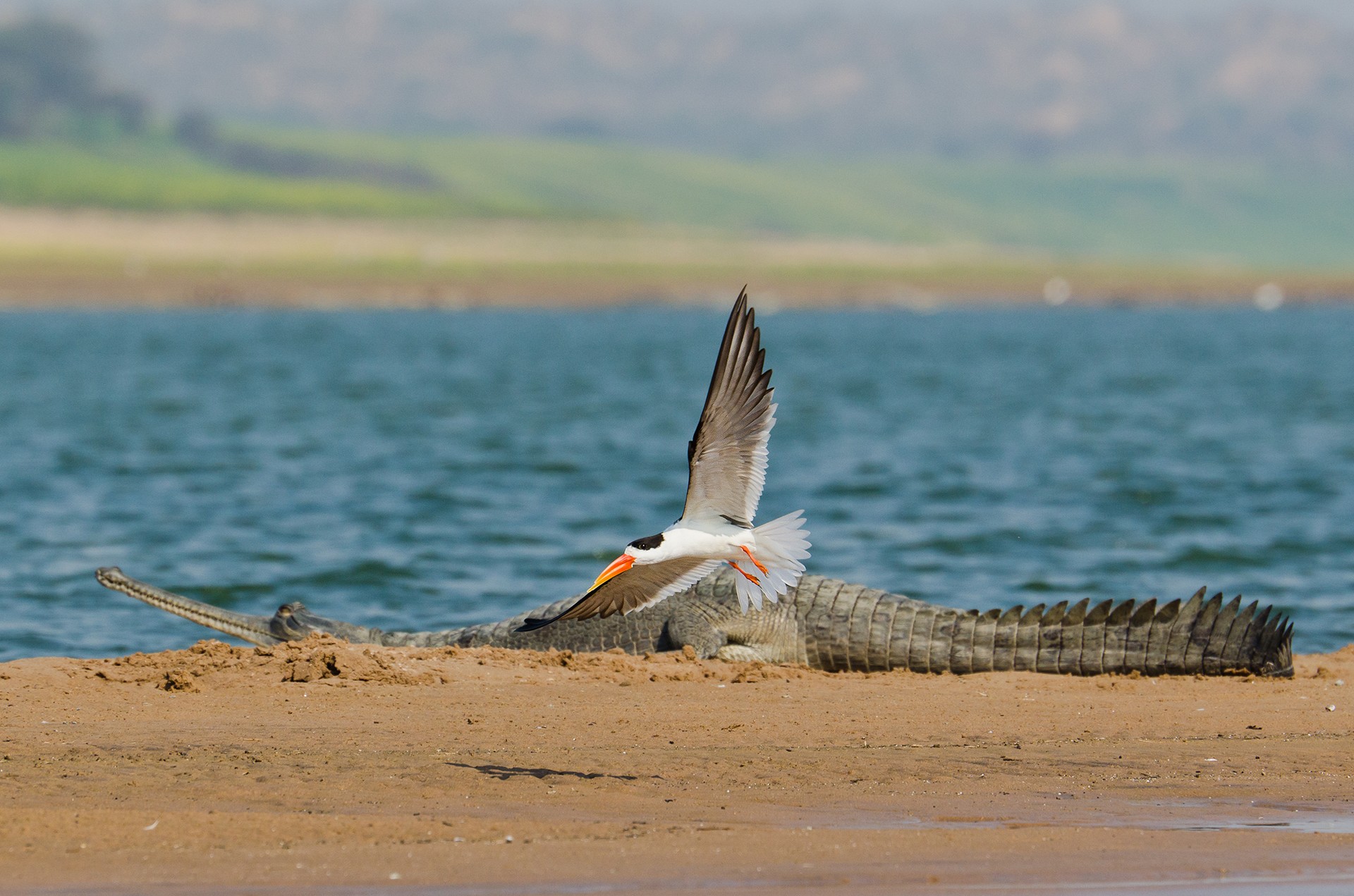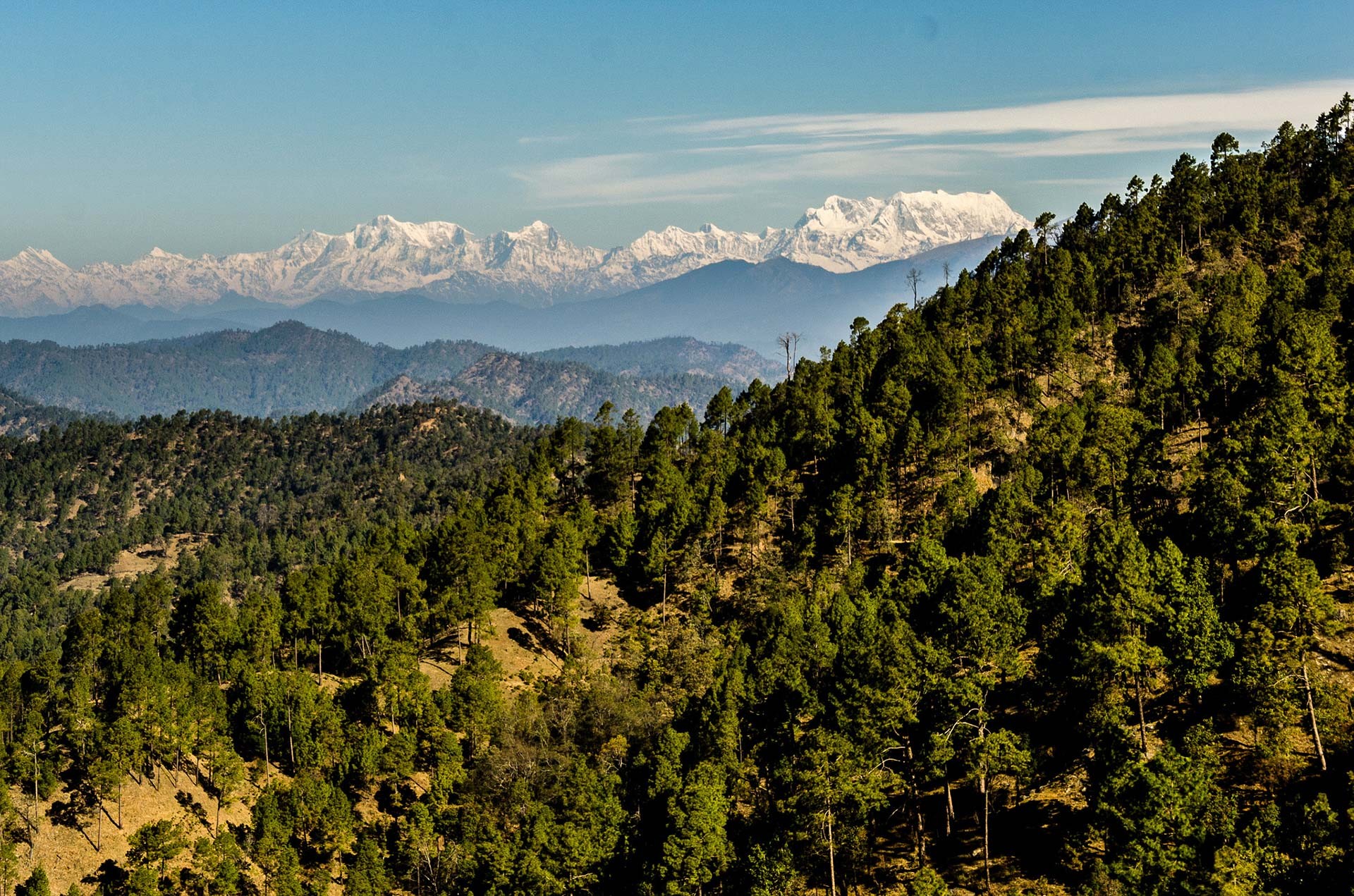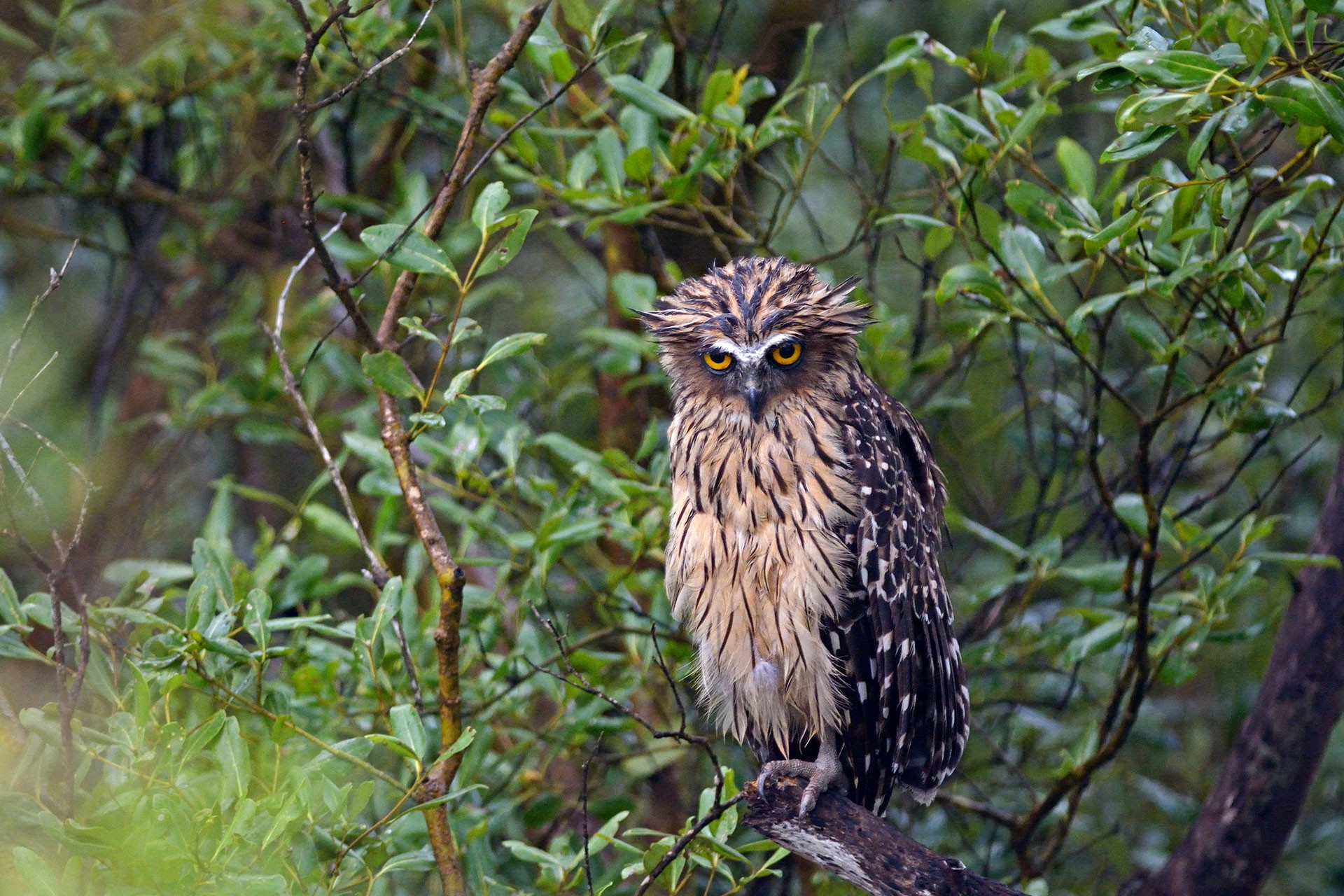Think back to your days of dreary middle school geography and history. A standard descriptor of India was its incredible natural diversity. Finally, here was something you couldn’t wait to grow up and experience! So this National Wildlife Week (even if you haven’t grown up all that much or experienced everything you’d hoped to yet), we're making it a little easier for you.
There are few better ways to celebrate India's wild spaces and wildlife, than to travel across your own state borders and see it for yourself. We’ve picked out our favourite natural destinations within each state and union territory – inland and coastal, island and mountain, beach and forest, national parks and towns in the back-of-beyond – hopefully, covering at least some of that diversity our textbooks could never do justice to. Here are 36 spots you can put on your calendar for this year. This is not a definitive list; these are just our picks. You could add to this, by sending in your favourites, and make this a travel list to watch for.
Andaman and Nicobar Islands
Neil Island
How about looking past the bustle of Havelock and heading to Neil Island instead? Neil Island is a 45-minute ferry ride from Havelock, and is connected to Port Blair and Rangat as well. You’d be in for a real treat: serene white sands, tropical forests, magnificent marine life, and emerald green paddy fields. You can cycle leisurely across the island or take a stroll along the long arc-shaped Laxmanpur or Sitapur beaches. For encounters of the aquatic kind, make your way to the natural bridge locally known as Howrah Bridge, where the rockpools give you a glimpse of underwater life at low tide.
Andhra Pradesh
Borra Caves
A hole in a cave? Well, that’s what Borra Guhalu, the local name of the Borra Caves, literally translates to. En route to the Araku Valley from Visakhapatnam, a journey by train takes you through over 40 tunnels before you get to the Borra Guhalu Railway Station. Get a little creative and give your own names and stories to the dizzying number of stalactite and stalagmite formations found here – the caves are known for their karstic limestone structures, which are formed by water as it percolates on the roofs, dissolving limestone and trickling to the floor.
Arunachal Pradesh
Tawang
In medieval times, Tawang, the smallest district in Arunachal Pradesh, used to be a part of Tibet. One of the most thinly-populated areas in the country, it is the site of the Tawang Monastery, which dates back to the 17th century, and Sela Pass, the second-highest motorable pass in the world. Go here to immerse yourself in history, but also for the lakes, the waterfalls, and the spicy Monpa cuisine.
Assam
Majuli
Make your way to Majuli, the largest river island in the country – an island that has been slowly sinking over the past few decades as it is eroded by the Brahmaputra, even as its total landmass increases with the formation of new sandbars. Close to Jorhat in the upper Brahmaputra in Assam, this island has a population of approximately 1.6 lakh, mostly composed of the Mising tribe, which migrated here centuries ago from the Mongolian steppes. With little pollution and frequent rains, a wide range of flora and fauna – such as the Greater Adjutant Stork, Spot-billed Pelican, Siberian Crane and the Whistling Teal – thrives in this wetland. While it’s a great destination all year round, plan a trip in November if you’re looking to catch the three-day long Rasleela festival that everyone on the island participates in.
Bihar
Vikramshila Gangetic Dolphin Sanctuary
No clear range-wide estimates of the population of the Gangetic Dolphins exist, but according to ecologist Nachiket Kelkar, no more than 4000 of the Gangetic subspecies exist overall across India, Nepal and Bangladesh. Vikramshila is the only designated protected area for these endangered dolphins in all of Asia. The sanctuary stretches across 50 kilometres along the Ganges, from Sultanganj to Kahalgaon. In addition to the dolphin, you should also look out for freshwater turtles, waterfowl, the Indian Smooth-coated Otter and gharial here.
Chandigarh
Rock Garden
This world-famous sculpture garden was built secretly by a government official, out of household and industrial waste, sixty years ago. Nek Chand found a gorge in a forest near Sukhna Lake, which had been designated a forest buffer. He began to collect material from demolition sites across the city, and used it to cover the 12-acre area with hundreds of pottery-covered sculptures – ranging from tiny depictions of entire villages to life-size horses and camels. Incredibly, Nek Chand was able to keep the area a secret for 18 years, until 1975, when it was discovered by authorities. He went on to become the most-exhibited Indian artist; he was even honoured with the Padma Shri award in 1984.
Chhattisgarh
Achanakmar Wildlife Sanctuary
Established in 1975, the Achanakmar Wildlife Sanctuary in Chhattisgarh was set up under Project Tiger. It is linked to the Kanha Tiger Reserve in Madhya Pradesh through the hilly Kanha-Achanakmar Corridor. Forging your way through its thick forests will give you the experience of one of the wilder wildlife sanctuaries you’ll find in India. Head on to one of the five watchtowers; if you’re lucky, maybe you’ll chance upon the Bengal Tiger, Indian Leopard, Gaur, Sloth Bear, Ussuri Dhole or Indian Muntjac.
Dadra and Nagar Haveli
Silvassa
A tiny area nestled between the rather large states of Maharashtra and Gujarat, the union territory of Dadra and Nagar Haveli is located at the mouth of the Daman Ganga river. While we’d suggest exploring the entire area, which is less than 500 square kilometres in size, the capital city of Silvassa makes for a great start – with green landscapes within the city and numerous sights close by, such as the Vanganga Lake, Madhuban Dam as well as the remnants of Portuguese culture and architecture.
Daman and Diu
Diu Fort
The Diu Fort was built in 1535 by the Portuguese during their colonial rule of Diu – marking the beginning of a 424-year period, which is the longest period of colonial rule anywhere in the world. On this little island on the southern tip of the Gujarat coast at the mouth of the Gulf of Cambay, there are churches, venetian Gothic style bungalows and carved wooden and stone havelis within the fort estate. Looking out towards the sea from the fort ramparts, you can just about visualise the historic moments that took place, in what was once a vibrant strategic centre for the Portuguese conquerors.
National Capital Territory of Delhi
Asola Bhatti Wildlife Sanctuary
At the edge of the Southern Ridge in Delhi, the northern Aravalli Hills merge with the Indo-Gangetic plains at Asola Bhatti. An erstwhile mining area, this source of the famous ‘Badarpur sand’ was closed by the Delhi government. The community lands of Asola, Shapur, Maidangari and Bhatti were notified between 1986 and 1991, and finally reclaimed as an important wetland habitat for the Brahminy Starling, Spot-billed Duck, Northern Shoveller, Great Cormorant, Rufous-backed Shrike, Golden Jackal, Indian Crested Porcupines, and a number of other species. Don’t miss the Neeli Jheel (‘blue lake’) or the rock cliffs when you go birding there.
Goa
Salim Ali Bird Sanctuary
Beaches and sunsets are just a few of the reasons to visit everybody’s favourite sunshine state. But there’s far more to Goa. The Salim Ali Bird Sanctuary on the island of Chorao is an estuarine mangrove habitat that was once described by Salim Ali as the “richest bird habitat on peninsular India”. You can find the Striated Heron, Western Reef Heron, Little Bittern, Black Bittern, Jack Snipe and Pied Avocet here, as well as other mangrove species such as mudskippers and fiddler crabs.
Gujarat
Narara Island, Marine National Park
India’s Narara Island (it has a well-known namesake in Fiji), is part of the Marine National Park in the Gulf of Kutch. Accessible by road, it is 60 kilometres from Jamnagar in Gujarat. Narara is a destination for coral walking, not coral diving – the 2-kilometre walk along the shore at low tide will give you a chance to see a rich diversity of marine life. The reefs, mangroves, sea-grass beds and mudflats are home to octopuses, puffer fish, sea turtles, lobsters, crabs, dolphins, ray fishes, jellyfish, starfish, and sea anemones, as well as colourful corals and sponges.
Haryana
Sultanpur Bird Sanctuary
Just fifteen kilometres from Gurgaon, Sultanpur, which was one of ornithologist Salim Ali’s favourite haunts, is still a haven for birdwatching. These 360 acres of marshland around Sultanpur lake are visited by over 250 bird species, resident and migratory. This marshland is at its most active in the winter, when birds such as the Siberian Crane, Greater Flamingo, Black-winged Stilt, Northern Pintail, and Rosy Pelican can be spotted here.
Himachal Pradesh
Tirthan Valley
Named after the Tirthan river, a tributary of the Beas, the valley is located at an altitude of 1,600 metres above sea level. The Great Himalayan National Park (GHNP) was recently recognised by UNESCO as a World Heritage Site. Opportunities for trekking, river rafting, birding and trout fishing abound in a valley that’s still very much in the lap of nature. Other than the essential visit to GHNP, we must recommend Raju Bharti’s guest house in Gushaini if you’re heading here.
Jammu and Kashmir
Nubra
The road to the Nubra Valley from Leh crosses Khardung La – one of the highest motorable roads in the world. The Nubra and the Shyok rivers meet here to create some stunning landscapes as they separate the Ladakh and Karakoram ranges. Known for its trekking routes, orchards and white sand deserts, Nubra is the most recent area to be opened to tourism in Ladakh. This is the place to go to get a true sense for how small we are, beneath the mountains that tower over us.
Jharkhand
Saranda Forest
This dense forest in the hilly West Singhbhum district of Jharkhand used to be a private hunting reserve for the royal Singh Deo family of Saraikela. The 1,100 hectares of reserved forest is mostly evergreen, with a few exceptions. The area is dotted with iron ore mining towns today, but the reserved forests are still a haunt for many animals – wild elephants, bison, tigers and leopards. Don’t overlook the flora: you’ll find the rare orchid Pecteilis triflora here.
Karnataka
Bhadra Tiger Reserve
This protected area, spread across Karnataka’s Chikamagalur and Shivamogga districts, was also a Project Tiger reserve, and the first tiger reserve in the country to complete a successful village relocation program. The shola forest and mountain grasslands complex at Bababudan Giri is home to tigers as well as elephants, gaurs, leopards, flying squirrels and the Malabar Giant Squirrel.
Kerala
Periyar
The Periyar is the longest river in Kerala. By its banks, in Thekkady, is the Periyar Tiger Reserve where you’ll find elephants, Nilgiri Langurs, Sambar, Gaur, and a variety of birds. Take a cruise in the backwaters, stay on a houseboat or the Lake Palace Hotel inside the reserve, eat amazing Malayali delicacies such as appam and stew, pumpkin-based erissery and Kerala banana pudding, and simply soak in God’s Own Country at its best.
Lakshadweep
Agatti Island
Agatti Island, which is only a little over 7 kilometres long, is located on a coral atoll (a ring-shaped coral reef enclosing a lagoon) in the Arabian Sea. The medieval Moroccan traveller Ibn Batuta is said to have brought Islam here in the 14th century – it is still the main religion of the 7,000+ islanders. Hire a bicycle and track the length of the island along the vast blue sea and its colourful coral reefs. With clear waters and visibility up to 50 metres deep, this is counted among some of the best diving destinations in the world. If you go swimming in the ocean, you might be lucky to see turtles and giant morays, peer down at shoals of exotic fish from glass-bottomed boats and challenge yourself to spot a reef shark or a manta ray!
Madhya Pradesh
Bhimbetka
Located inside the Ratapani Wildlife Sanctuary in Madhya Pradesh, the Bhimbetka Rock Shelters are an archaeological site dating back to the Paleolithic period. The rock art and paintings found here depict the beginning of the Indian Stone Age (essentially, the earliest-known evidence of life on the subcontinent). Look out for the paintings that depict early evidence of dance. With more than 500 painted shelters spread across seven hills of the Vindhya and Satpura range, these caves have also found a place on the World Heritage List, curated by UNESCO.
Maharashtra
Igatpuri
The town of Igatpuri in Maharashtra is one of those quiet, mostly forgotten hill stations which still have a lot to offer. Close to Kasara in Nashik district, Igatpuri was a historically important town because of its strategic location in the Thal Ghat – as evidenced by the numerous ruins of old forts dotting the hills such as Ratangad and Tringalwadi. Gushing waterfalls are also found in large numbers, such as the ones at Vihigaon, Camel’s Valley and the Five Waterfalls near Ghatandevi.
Manipur
Loktak Lake
The largest freshwater lake in the northeast, Loktak Lake (Lok = "stream" and tak = "the end") is famous for its floating ‘phumdis’ or masses made up of decomposing organic matter, which don’t look half as bad as they sound! The last refuge of the endangered Manipur Brown-antlered Deer or Sangai is the Keibul Lamjao National Park, the world’s only floating national park, located on one of the largest phumdis.
Meghalaya
Nohwet Living Root Bridge
The living root bridges of Meghalaya are a marvellous showcase of human dedication and organic engineering – constructed by the Khasi and Jaintia tribes by joining the roots of Ficus elastica or the Rubber tree and helping them grow across the river. The roots are enclosed in the hollowed-out trunks of Betel Nut trees, which guide their growth and prevent them from fanning out. While the Cherrapunji living root bridge is far more famous, credit needs to be given to this lesser-known bridge in Nohwet, a small village near Mawylnnong. We have no way of knowing for sure how old it is, but is said to have been around for at least 180 years, built by the four clans of Khongsar, Khongthohrem, Khongliar and Nohwet.
Mizoram
Dampa Wildlife Sanctuary
A haven for wildlifers in the ‘land of the highlanders’, the Dampa Wildlife Sanctuary has been a Tiger Reserve since 1994. One hundred and thirty kilometres from Aizawl, you will find everything from tropical forests, deep valleys, jungle streams, natural salt licks, pythons, leopards and Sloth Bears in the remote wildernesses of this tiger forest. A region that sees heavy rains and stormy weather, it’s best visited between October and February.
Nagaland
Dzukou Valley
While the majority of Dzukou Valley lies in neighbouring Manipur, it is Nagaland that claims this picturesque region as an integral part of the state. A favourite among trekkers, the valley lies about 2,400m above sea level, behind Japfu peak. Its gentle slopes are cut through by two meandering streams, which freeze solid in the winter. Dzukou is known as the 'Valley of Flowers' in the northeast, because for most of the year, it is abloom with seasonal flowers. Keep an eye out for the rare Dzukou lily, only found in this area.
Odisha
Chilika Lake
Chilika Lake, spread across 110 square kilometres in the districts of Khurda, Ganjam and Puri in Odisha, is a lake with numerous achievements to its name. It is the largest coastal lagoon in India, the largest wintering ground for migratory birds on the Indian subcontinent, and the largest habitat for the Irrawaddy Dolphin. It was also the first Indian water body to be added to the Ramsar List in 1981, as a wetland of international importance. This pear-shaped lake harbours resident and migratory birds, numerous species of fish as well as the rare and Critically Endangered limbless lizard (Barkudia insularis), which is endemic to Barkud Island in Chilika.
Puducherry
Ousteri/Osudu Lake
About 10 kilometres from Puducherry, this century-old manmade lake is a freshwater lake which is an important wintering ground for migratory birds. Identified by the IUCN as one of Asia's most important wetlands, this lake is visited by species such as the Golden Oriole, Openbill Stork, Tailor Bird, Painted Stork, Oriental White Ibis, White-breasted Waterhen and Spotted Owlets every winter. Among the most important wetlands of Asia, it is a complex ecosystem of wetland, marshes and mudflats. It also plays the important role of serving as a catchment area for the coastal town of Puducherry.
Punjab
Harike Wetland
Harike or Hari-ke-Pattan is the largest wetland in northern India. It was artificially engineered through the construction of headworks across the Sutlej in 1953, to provide irrigation and drinking water to Punjab and Rajasthan. The reservoir that was created as part of this project forms the Harike lake and wetland. Over 200 species of birds visit Harike in the winters – the Cotton Pygmy Goose, Tufted Duck, Yellow-crowned Woodpecker, Black-necked Grebe, Great Crested Grebe and Pallas's Gull are just a few of the more well-known birds. Harike is said to host biodiversity comparable to the Keoladeo National Park near Bharatpur. In recognition of its importance as a wetland habitat for migratory waterfowl, as well as turtles and Smooth-coated Otters, it was declared a Ramsar Site.
Rajasthan
Bera (Pali District)
This small town in Pali district may just have more leopards than tourists. The numerous caves dotting the Aravalli hills are good hideouts for leopards in the thick of what’s known as ‘leopard country’. Located two hours from Udaipur, it is said to be even better for leopard sightings than Nagarahole in Karnataka, and is slowly becoming more well known. It’s not just the leopards either – travel along the Jawai river and you can spot Marsh Crocodiles, Nilgai, Jungle Cats, Ospreys, and even the Sarus Crane.
Sikkim
Tsomgo Lake
Locally known as “Changu Lake”, this high-altitude lake is a sacred wetland located at 3,700 metres above sea level. In winter, as many as 10 to 15 migratory species can be found at this wetland, such as the Snow Pigeon and the Tufted Pochard. The lake changes colour with the different seasons, which is said to have inspired a spiritual following – it is worshipped by the Sikkimese and was notified as a “religious place more than 100 years old” by the State government in 2001.
Tamil Nadu
Valparai
Nestled in the Anamalai Hills of the Western Ghats, Valparai is a quaint, sleepy town. Once covered by lush evergreen forests, the landscape is now a mosaic of forest fragments and plantations. It is one of the best places to see the endemic and endangered Nilgiri Tahrs and Lion-tailed Macaques. Other species to look out for are Great Hornbill, Nilgiri Langur, Gaur, elephants, flying squirrels, Brown Palm Civet and, if you are very lucky, leopards and wild dogs. Do stop at the interpretation centre managed by Nature Conservation Foundation (NCF) to understand the area and the biodiversity of these forests better. Drive up to the high point at Nallamudi Poonjolai, also known as Seen God, to enjoy spectacular views from high above the canopy of these ancient evergreen forests.
Telangana
Papi-Kondalu
The Papikonda Wildlife Sanctuary in the Khammam district of Telangana is located on the banks of the river Godavari. Its location in the fertile Godavari basin, with countless streams cutting through the forests, make it a unique ecological and geomorphological zone with rich biodiversity. Travel there by boat, live in Kolluru Bamboo huts, eat specially cooked bamboo chicken and look out for tigers, leopards, Sambar, Spotted Deer and Gaur.
Tripura
Jampui Hills
Jampui Hills is a small picturesque hill station in Tripura that’s still got the lush green charm of days gone by. The Balinchhip watchtower at the Mizoram border is located on the highest peak, and gives you a view of the Chittagong Hill Tracts, the Kanchanpur-Dasda valley and colourful orange orchards.
Uttar Pradesh
Chambal
There’s so much more to Chambal than the stories we hear of dacoity and revenge in the ravines. The National Chambal Sanctuary is located on the largest arc of the Chambal from Jawahar Sagar Dam to Dholpur, and ends in a confluence of five rivers at Pachnada in Uttar Pradesh. It is home to the Mugger and the Gharial, freshwater turtle species, Smooth-coated Otters, Gangetic River Dolphins, Black-bellied Cranes, Sarus Cranes and Black-necked Storks.
Uttarakhand
Binsar
Binsar Wildlife Sanctuary at the top of the Jhandi Dhar hills in the Himalayas was established in 1988 to conserve and protect the shrinking broad leaf oak (Quercus) forests of the Central Himalayan region. From Zero Point or Jhandidhar (translating to ‘flagstaff’, named after the Union Jack which would be hoisted here to announce the arrival of British officials pre-Independence), you can see the Kedarnath, Shivling, Trishul and Nanda Devi peaks. The sanctuary is an Important Bird Area and has over 200 bird species, including the Rufous Sibia, Himalayan Monal, Koklass Pheasant and Eurasian Jay. Not too far away is the Kasar Devi temple, which housed Dutch monks in the 1970s and early 1980s.
West Bengal
Sundarbans
Mangroves form an important transition zone between marine and forest ecosystems. The Sundarbans delta region is among the largest mangroves in the world, measuring about 10,000 square kilometres in all. Around forty percent of this rare natural wonder lies in India, in West Bengal. The rest of its vast tracts of forest and saltwater swamps are in Bangladesh. The name ‘Sundarban’ may have been derived from the mangrove species Sundari, found here in large numbers. It is the only mangrove forest in the world where tigers are found. A large number of fish, crabs, shrimps and other crustaceans reproduce among the aerial mangrove roots, while terrestrial species such as Fishing Cats, macaques, Flying Foxes and pangolins are also found here.

